Staying organized in 2025 means more than just writing a to-do list. With work, home, and personal goals all competing for attention, having the right app can help keep things on track. From digital planners to calendar managers and task trackers, today’s best organization apps are designed to simplify your schedule, reduce stress, and help you stay productive without burning out.
And if food routines are part of what you’re trying to organize, that’s where ReciMe fits in. It helps save and sort recipes from platforms like TikTok, Pinterest, and Instagram and Facebook, turn them into custom cookbooks, build meal plans, and create grocery lists organized by aisle. Whether you’re juggling work deadlines or planning dinners for the week, ReciMe supports everyday routines without adding extra work. Download ReciMe now and let’s dive into the best organization apps of the year.

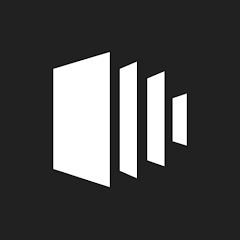
1. Timestripe
Timestripe is a planning app that structures goals across different timeframes, such as daily, weekly, monthly, and long-term. It introduces a system called “Horizons,” which segments planning into various time scopes. Users can input personal or work-related tasks and organize them within this framework. The app also includes guided sequences organized by topic, covering areas like health, finance, or lifestyle planning.
The interface supports the use of boards where users can place lists, tasks, or other content. Templates created by others are available, and users can create and share their own. The app includes features such as a dark mode, colored labels, linking between boards and calendars, and text formatting options. Timestripe is accessible on mobile devices and via web browser.
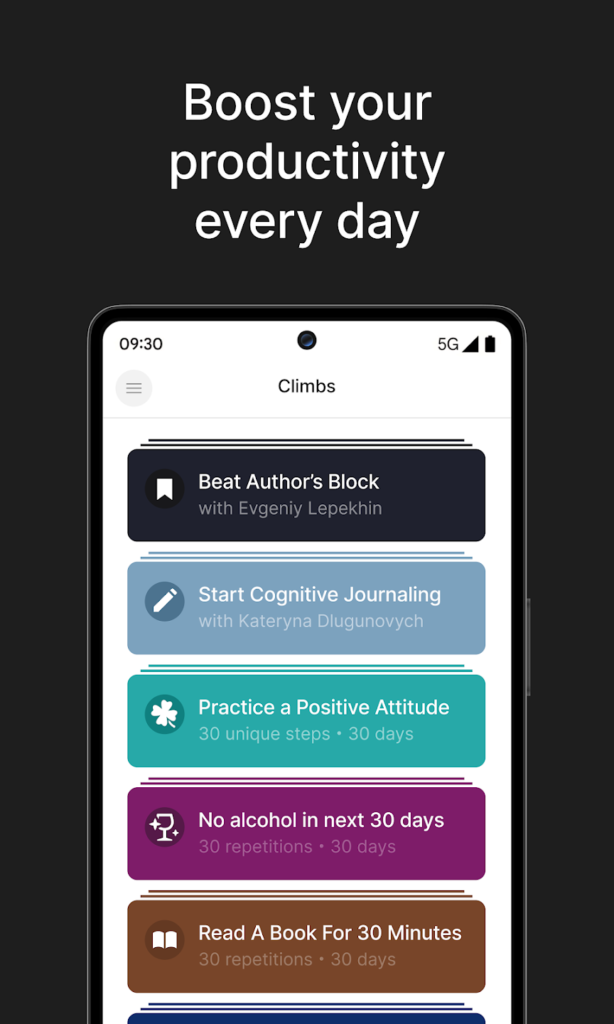
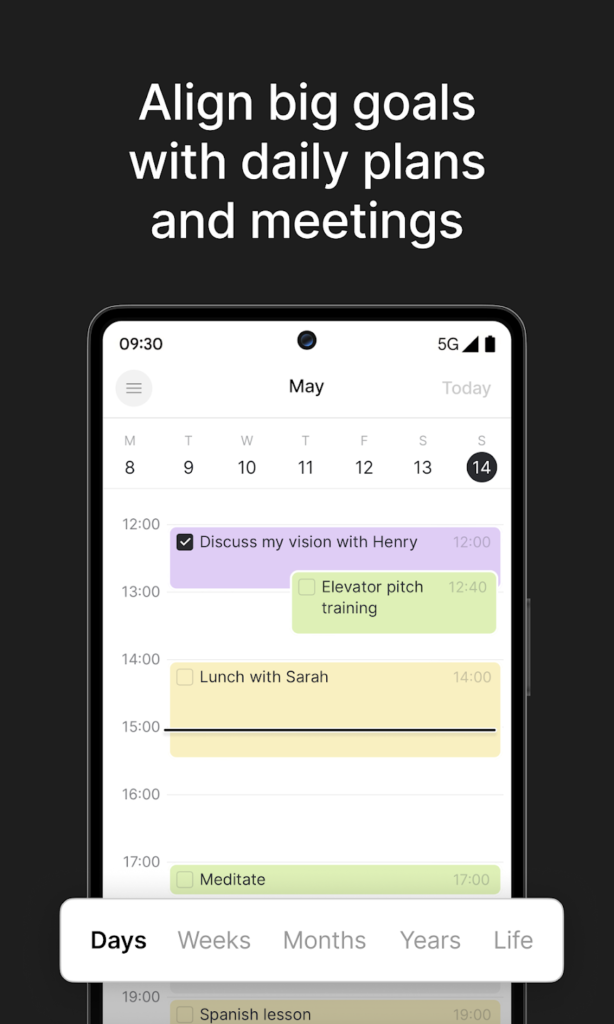
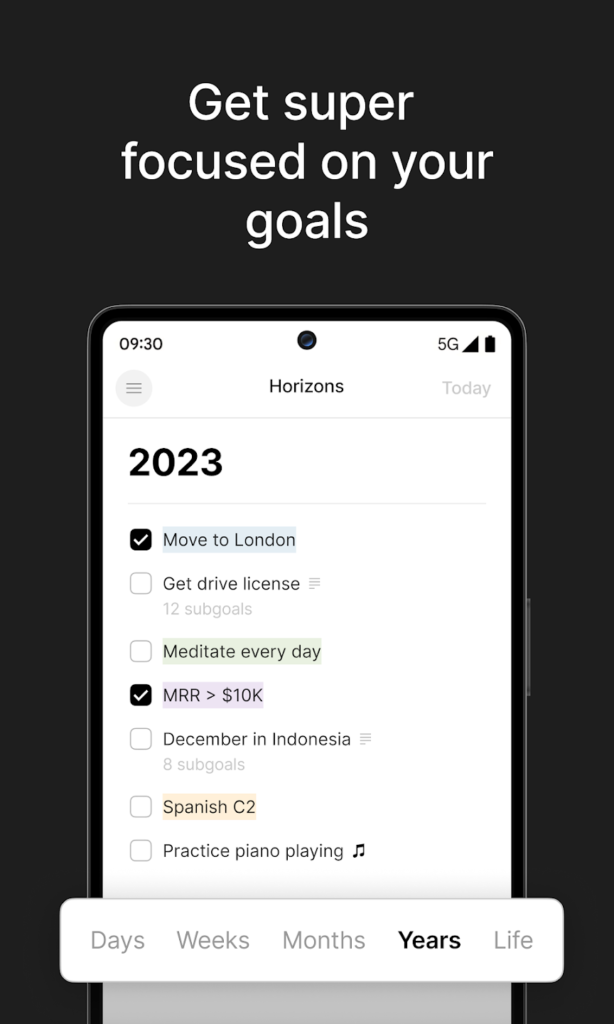
Key Highlights:
- Goal structuring based on daily to lifetime timeframes
- Guided sequences categorized by theme
- Board-based interface for organizing entries
- Formatting tools and visual tags for entries
- Option to use or create templates
Who it’s best for:
- Users who prefer to organize content by timeline
- People who collect or create structured templates
- Those who maintain multiple task lists across categories
- Users looking to view goals and tasks within a broader framework
Contact Information
- Website: timestripe.com
- App Store: apps.apple.com/us/app/timestripe-goal-manager
- Google Play: play.google.com/store/apps/details
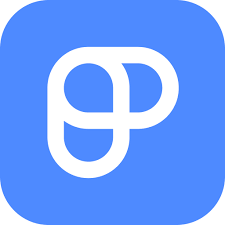
2. Plaky
Plaky is a project organization app developed by CAKE.com Inc. It allows users to manage tasks within project boards, assign collaborators, and input additional task-related information using custom fields. Tasks can be tracked and viewed through different formats, including list view, Kanban, and Gantt charts. The app supports grouping, filtering, and configuration settings for project visibility and arrangement.
Project boards can be customized by grouping items or adjusting the display mode. Users can also monitor status changes and access descriptions for attached files. The app is available for mobile devices and includes features such as conflict resolution between viewer roles and project spaces. Plaky supports multiple languages and is compatible with both Android and iOS systems.
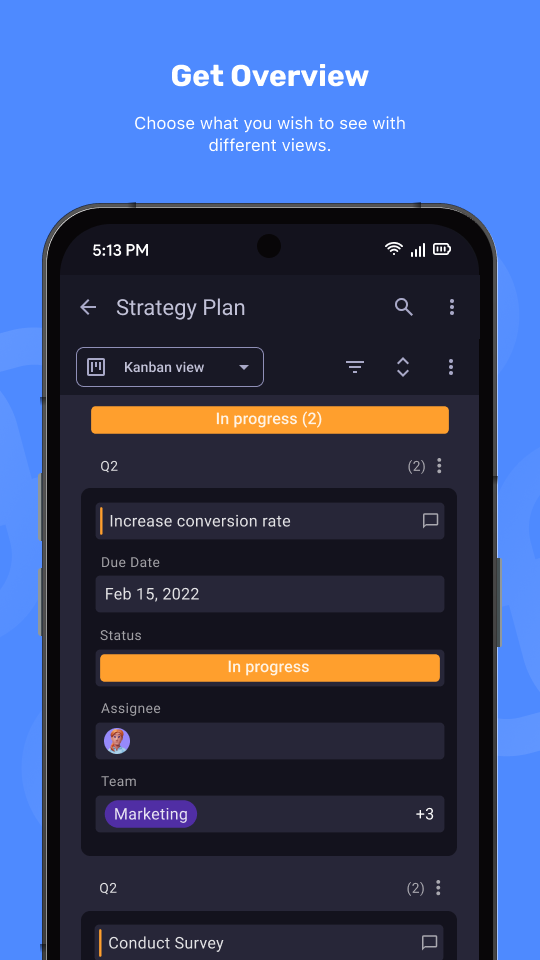
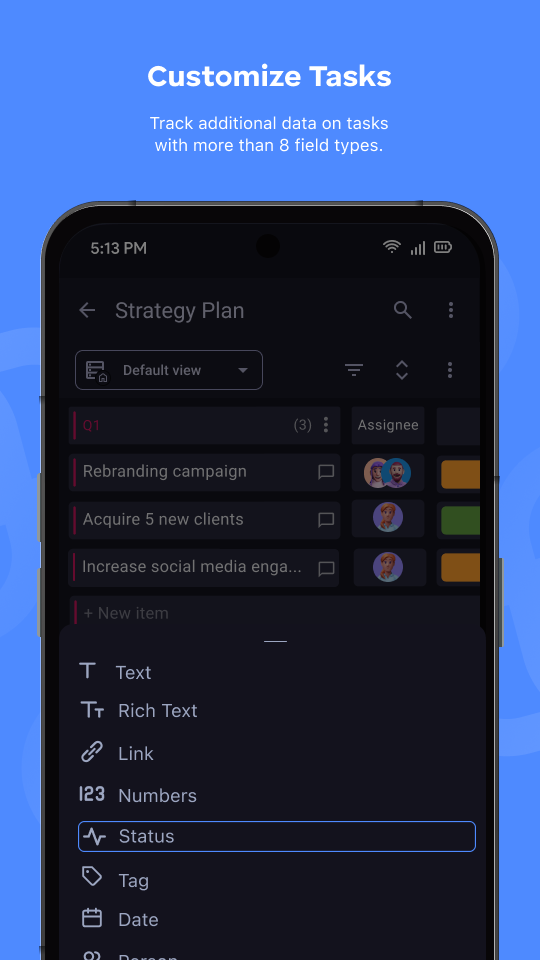
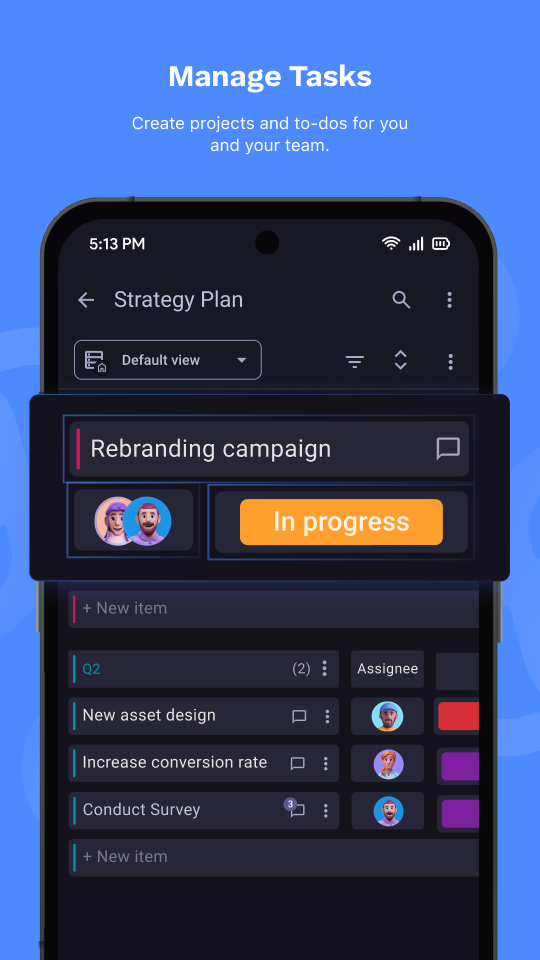
Key Highlights:
- Board-based structure with list, Kanban, and Gantt views
- Task assignment, status tracking, and custom fields
- File description support and board configuration options
- Available in several interface languages
- Works on Android and iOS devices
Who it’s best for:
- Users who manage multi-person projects with distinct task roles
- People organizing tasks that require different view modes
- Teams using mobile devices for project coordination
- Individuals working with structured task groupings and categories
Contact Information
- Website: plaky.com
- App Store: apps.apple.com/us/app/plaky
- Google Play: play.google.com/store/apps/details
- LinkedIn: www.linkedin.com/company/plaky
- Facebook: www.facebook.com/PlakyCom
- Twitter: x.com/PlakyCom
- YouTube: www.youtube.com/c/PlakyCom
- Instagram: www.instagram.com/plaky.app
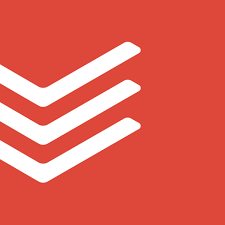
3. Todoist
Todoist is a task management app developed by Doist Inc. that offers users a system for organizing personal and professional responsibilities. Tasks can be entered manually or through natural language input and are arranged using different views, such as list, board, or calendar formats. The app also includes filtering options for separating work-related and personal items, as well as the ability to create repeating tasks based on custom schedules.
Users can link Todoist with third-party tools and assign tasks when collaborating on shared projects. The app supports reminders, file attachments, and templates for a variety of use cases. Versions are available for mobile, desktop, and smart devices, and synchronization across platforms is supported. Some features, such as location-based reminders, are available through an upgraded plan.
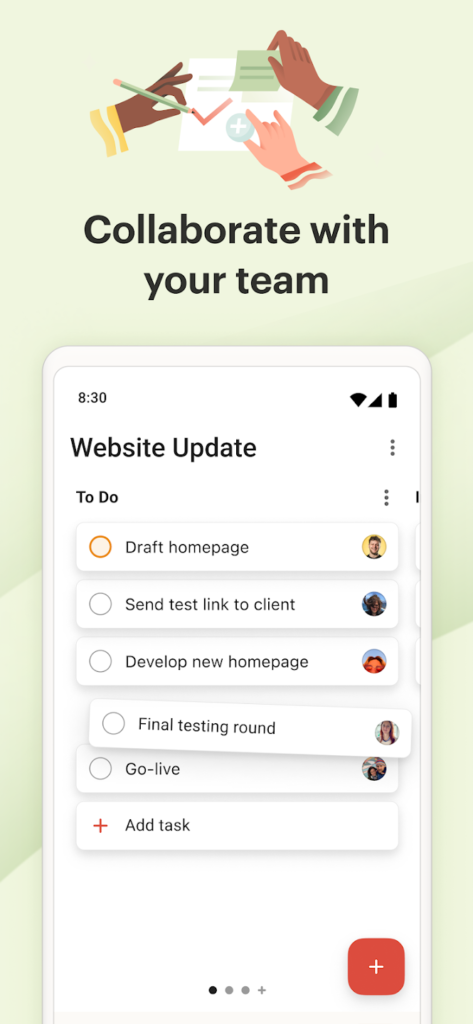
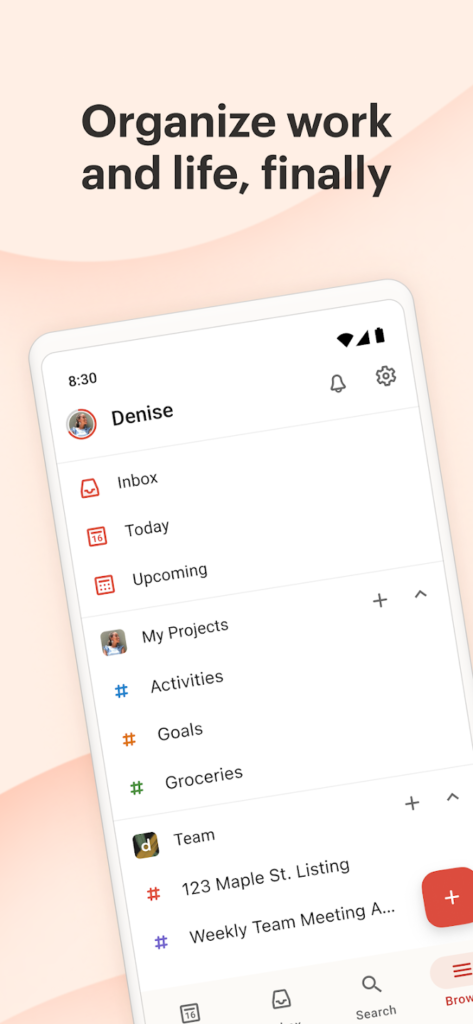
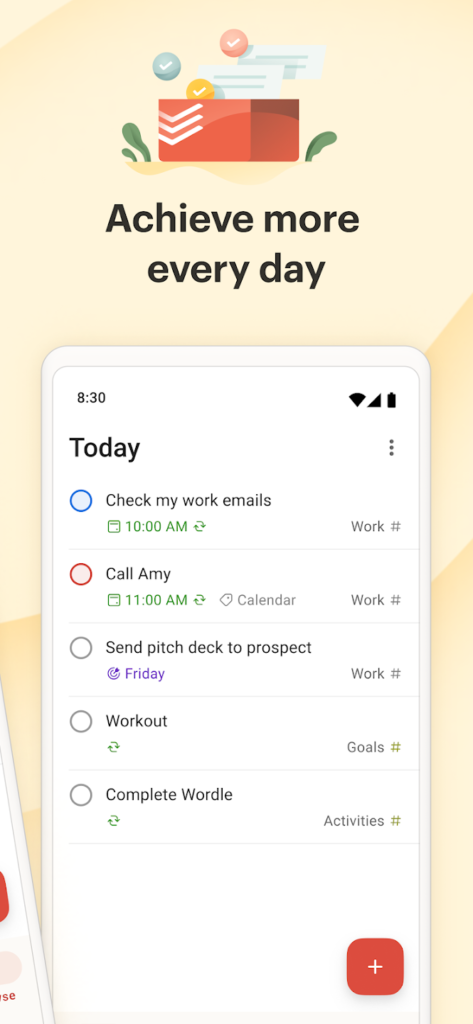
Key Highlights:
- Task organization using list, board, and calendar views
- Natural language input for scheduling and recurring tasks
- Third-party integration support with tools like calendars and messaging apps
- Task delegation and collaboration tools
- Synchronization across phones, tablets, and smartwatches
Who it’s best for:
- Users who plan daily and weekly tasks across devices
- Individuals looking for multi-view task organization
- Teams managing shared task lists
- People who use integrations with productivity tools
Contact Information
- Website: todoist.com
- App Store: apps.apple.com/ua/app/todoist-to-do-list-calendar
- Google Play: play.google.com/store/apps/details
- E-mail: privacy@doist.com
- Twitter: x.com/doist
- LinkedIn: www.linkedin.com/showcase/todoist
- Instagram: www.instagram.com/todoistofficial
- Address: 251 Little Falls Drive, Wilmington, DE 19808
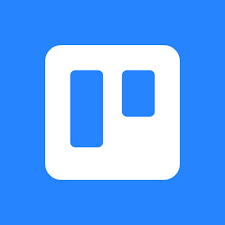
4. Trello
Trello is a task and project organization tool developed by Atlassian. It is based on a system of boards, columns, and cards, allowing users to arrange tasks visually. Each card can contain checklists, comments, attachments, due dates, and labels, and users can move cards across columns to reflect progress. The interface supports collaboration by letting users assign cards, leave feedback, or attach content from integrated services like Google Drive or Dropbox.
The app can be used individually or with groups and is compatible with both mobile and desktop platforms. Trello supports calendar views, offline work with automatic sync, and notification settings to track changes. Several languages are supported, and the mobile version includes features like widget integration and Siri shortcuts.
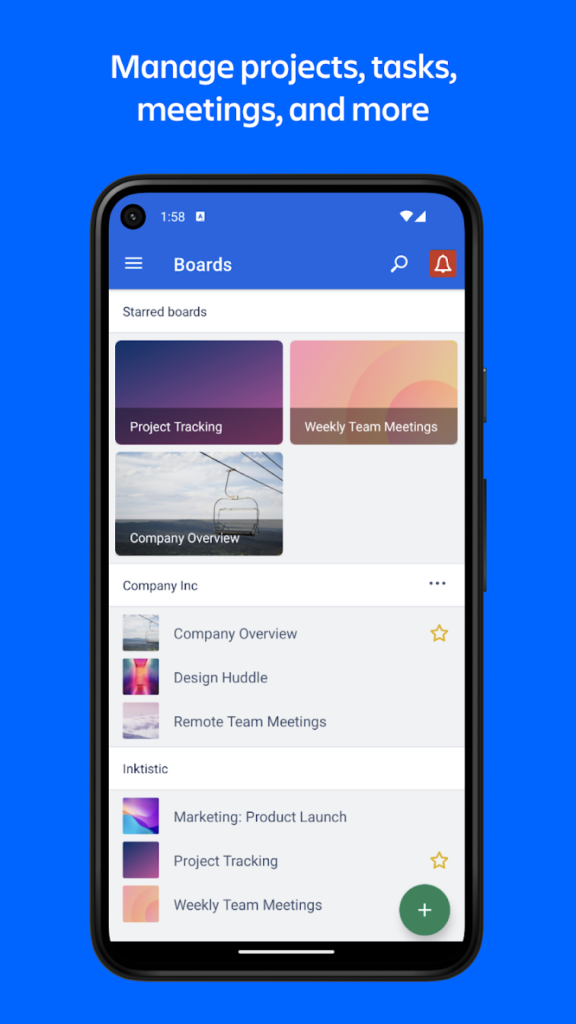

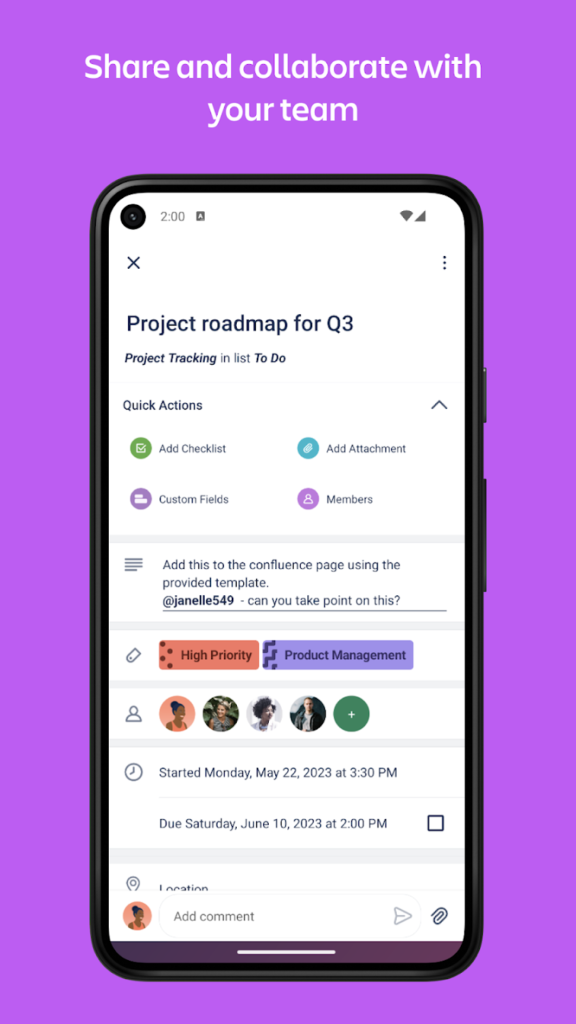
Key Highlights:
- Card-based organization across boards and columns
- Support for attachments, checklists, labels, and due dates
- Calendar and map views available through visual enhancements
- Sync and editing options offline and across devices
- Collaboration via comments, card assignments, and shared boards
Who it’s best for:
- Individuals managing ongoing personal or work tasks
- Teams organizing shared workflows
- Users who prefer visual task tracking systems
- People working with attachments or structured task stages
Contact Information:
- App store: apps.apple.com/us/app/trello-organize-anything
- Google Play: play.google.com/store/apps/details
- Website: trello.com
- Facebook: www.facebook.com/trelloapp
- Twitter: twitter.com/trello
- Instagram: www.instagram.com/trelloapp
- LinkedIn: www.linkedin.com/company/trello
- YouTube: www.youtube.com/channel/UCR
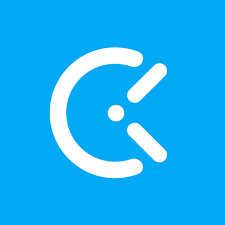
5. Clockify
Clockify is a time-tracking app developed by CAKE.com Inc. It allows users to log hours spent on projects or tasks through manual input or a built-in timer. Entries can be categorized by project, and users can view time logs in different formats, including summaries and calendar comparisons. The app also includes tools for recording time offline, which later syncs when reconnected to the internet.
In addition to time tracking, Clockify includes features for submitting leave requests, entering expenses, and accessing reports. It supports integration with web-based accounts and is compatible across mobile platforms. The app is available in multiple languages and allows users to track activity independently or in a team environment.
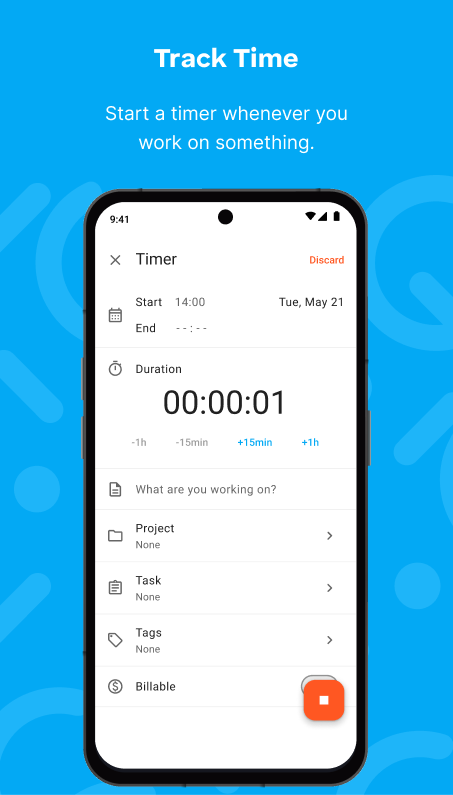
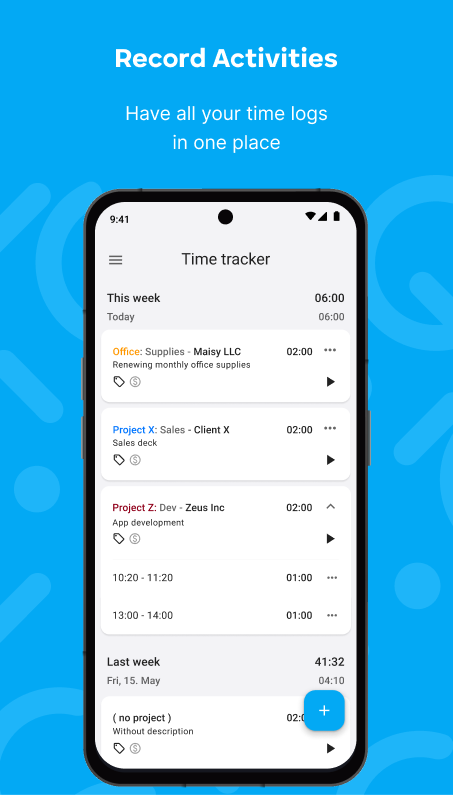
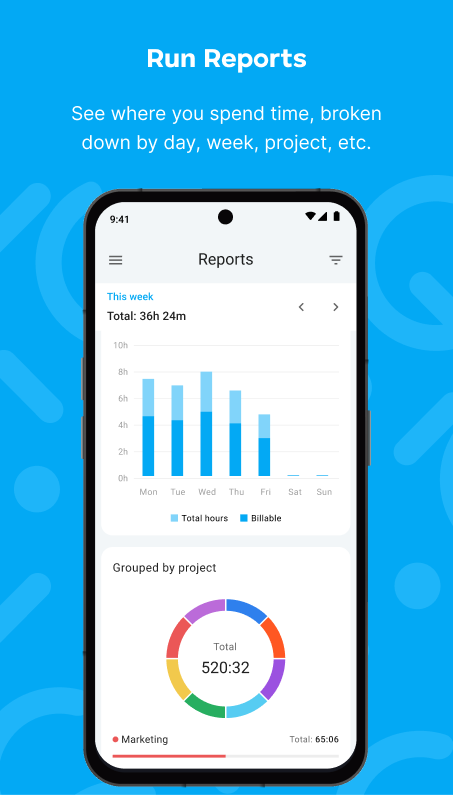
Key Highlights:
- Manual and timer-based time logging
- Breakdown of hours in reports and calendar format
- Options for leave requests and expense entries
- Offline tracking with automatic synchronization
- Accessible on Android, iOS, and web
Who it’s best for:
- Individuals managing time spent across multiple projects
- Users tracking billable hours or work sessions
- Teams requiring centralized time logs
- People using cross-platform time tracking tools
Contact Information:
- App store: apps.apple.com/us/app/clockify-time-tracker
- Google Play: play.google.com/store/apps
- Website: clockify.me
- Facebook: www.facebook.com/clockify.me
- Instagram: www.instagram.com/clockify.me
- YouTube: www.youtube.com/clockify
- LinkedIn: www.linkedin.com/company/clockify
- Twitter: x.com/Clockify
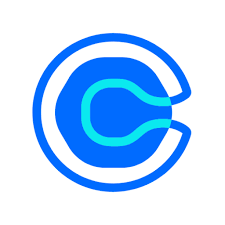
6. Calendly
Calendly is a scheduling app developed by Calendly LLC that allows users to manage meeting availability and coordinate appointments. The app uses link-based scheduling, where users set availability preferences and share booking links through messaging apps, email, or other platforms. Once a time is selected by an invitee, the meeting is added to the user’s calendar automatically.
The app integrates with calendar services like Google, Outlook, Office 365, and iCloud, and includes options for setting buffers between meetings, avoiding last-minute bookings, and defining various meeting types. Calendly supports individual, group, and round-robin scheduling. It also connects with platforms like Zoom, Google Meet, Salesforce, and others for extended automation and functionality.
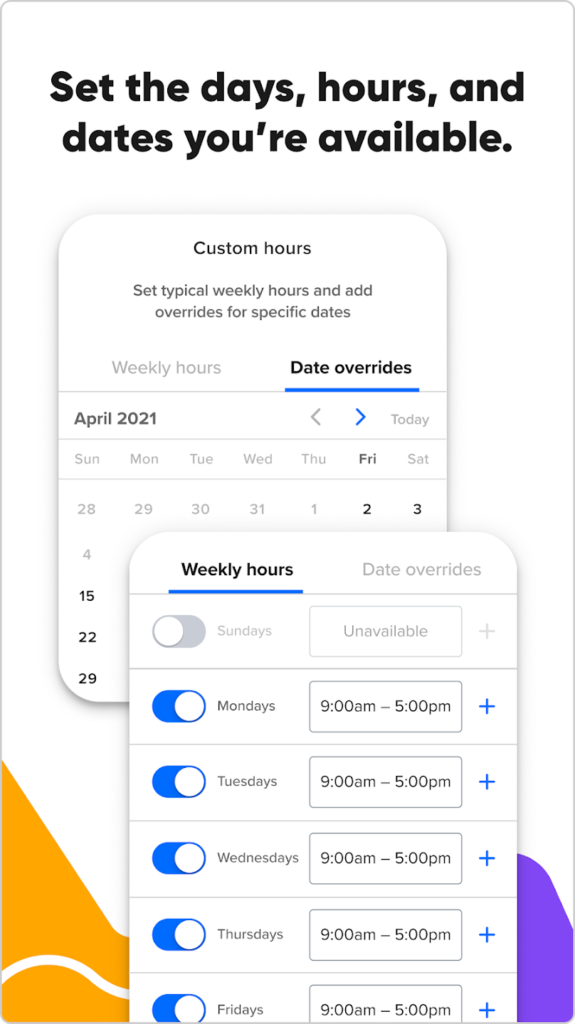
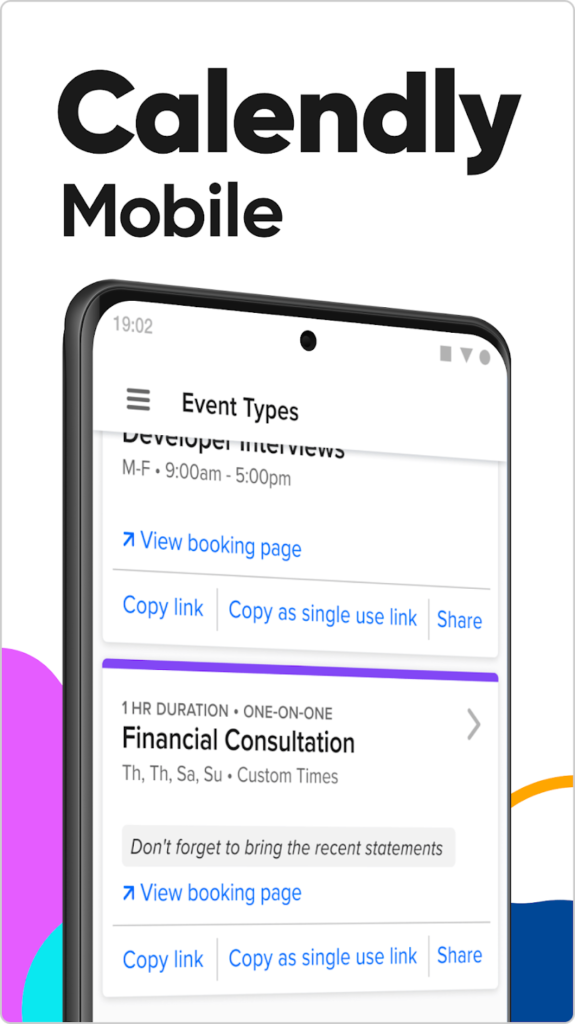
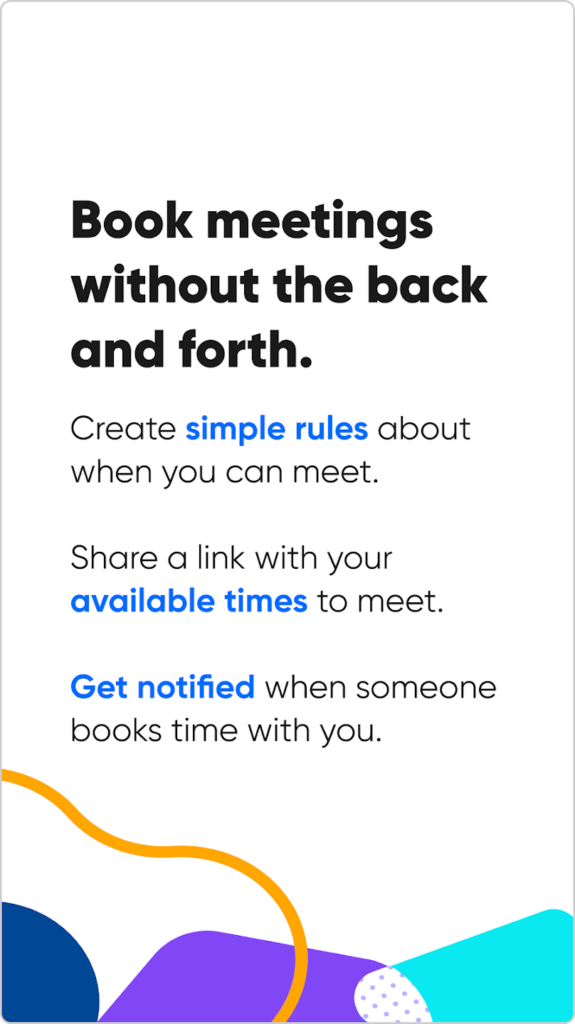
Key Highlights:
- Scheduling based on preset availability rules
- Integration with major calendar services
- Meeting types include one-on-one, recurring, and group sessions
- Time zone detection and calendar sync
- Works with third-party tools for automation
Who it’s best for:
- People managing multiple meetings across calendars
- Users looking to automate appointment scheduling
- Teams coordinating internal or external calls
- Individuals needing scheduling links for repeated use
Contact Information
- Website: calendly.com
- App Store: apps.apple.com/us/app/calendly-mobile
- Google Play: play.google.com/store/apps/details
- LinkedIn: www.linkedin.com/company/calendly
- Facebook: www.facebook.com/calendly
- Twitter: twitter.com/calendly
- Instagram: www.instagram.com/calendly
- YouTube: www.youtube.com/c/Calendly

7. Cozi Family Organizer
Cozi Family Organizer is a multi-purpose app developed by Cozi Inc. that allows users to manage schedules, lists, and meal planning from one shared account. It includes a centralized calendar that uses color coding to distinguish between users and lets participants receive event reminders and agenda summaries by email. The app is compatible across devices and supports access through mobile or desktop.
Cozi also includes tools for building shopping lists and to-do checklists. Users can organize recipes and add meal plans to the calendar, and list items can be edited collaboratively in real time. All features are linked to a single family account that can be accessed by different users with individual logins and their own passwords. A paid version includes additional scheduling tools and extended customization options.
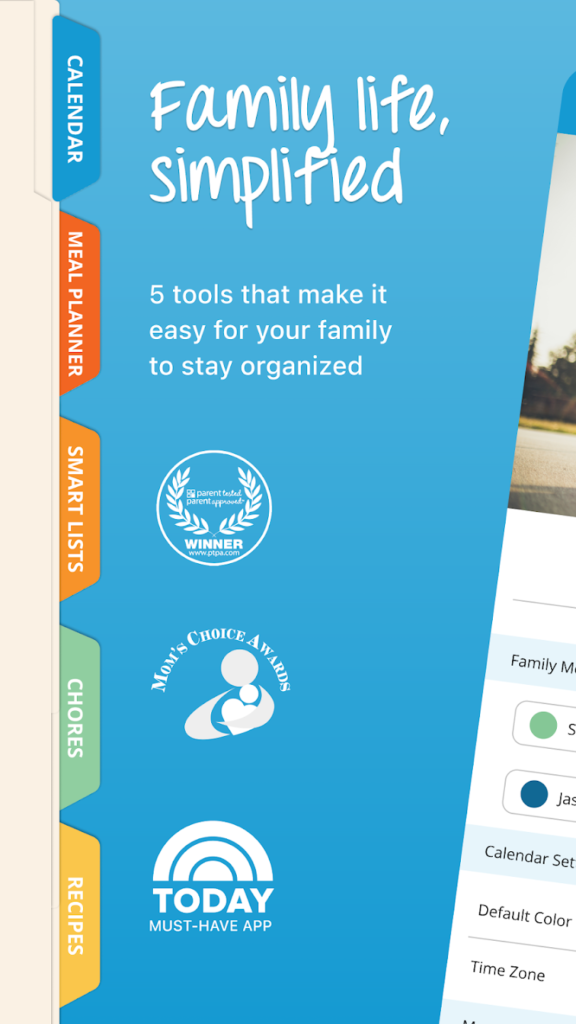
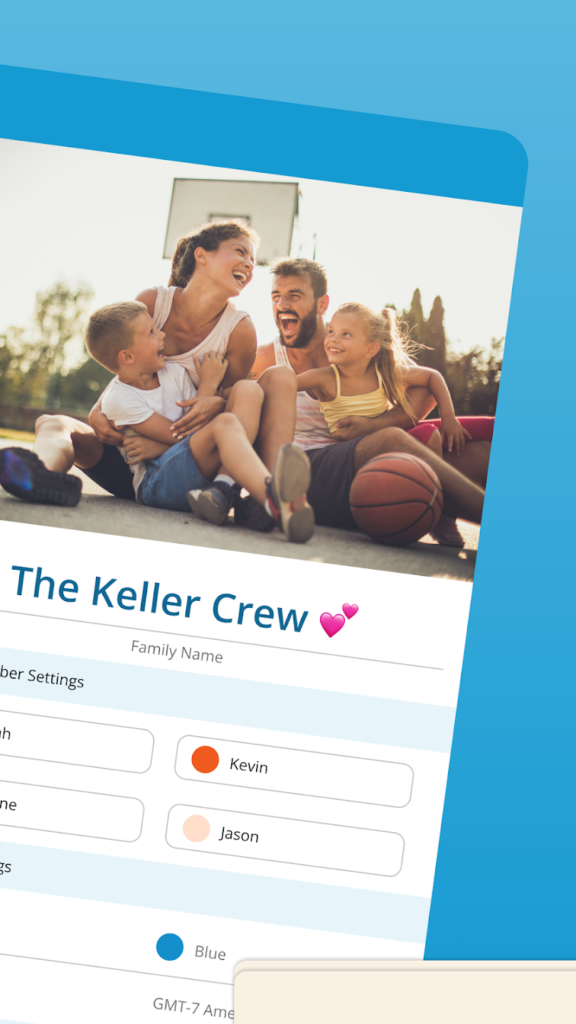
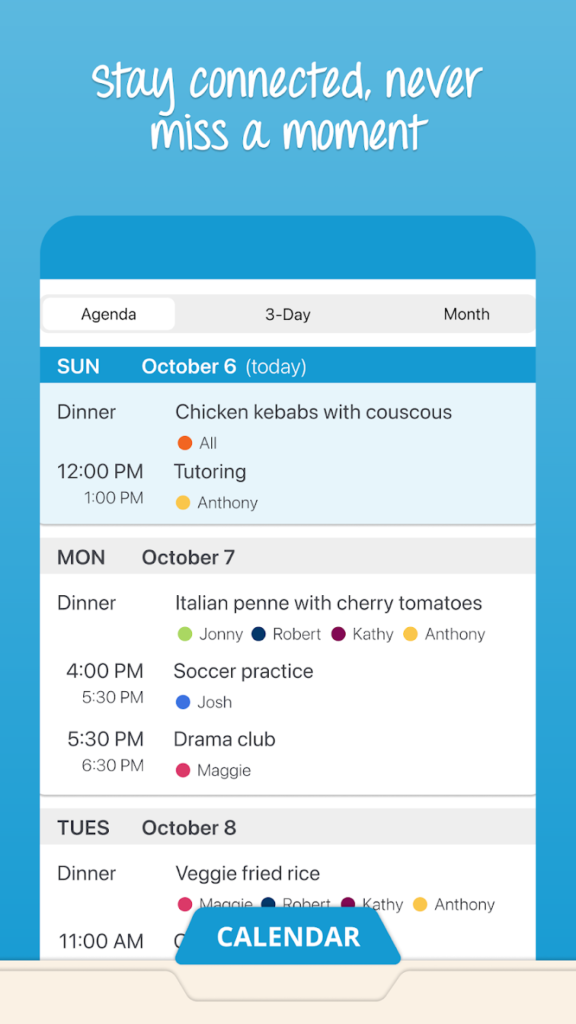
Key Highlights:
- Centralized family calendar with color-coded users
- Collaborative shopping lists and task checklists
- Recipe box for storing meals and ingredients
- Multi-platform access with unified data
- Optional subscription version for extended planning
Who it’s best for:
- Families managing shared household schedules
- Users organizing joint grocery and task lists
- People coordinating family events and chores
- Individuals using one account across multiple devices
Contact Information
- Website: www.cozi.com
- App Store: apps.apple.com/us/app/cozi-family-organizer
- Google Play: play.google.com/store/apps/details
- Facebook: www.facebook.com/CoziFamily
- Twitter: twitter.com/cozifamily
- Instagram: www.instagram.com/cozifamily
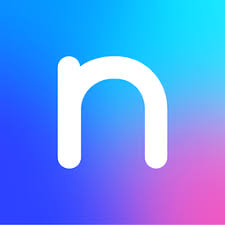
8. Notta
Notta is a transcription and note-taking app developed by Notta PTE. LTD. It converts audio to text in real time or from uploaded recordings, with support for multiple file formats. Users can create transcripts from meetings, lectures, interviews, or personal notes using either live speech or pre-recorded media. The app is available on Android, iOS, and desktop platforms, with cloud synchronization across devices.
Additional tools include text editing, playback controls, and export options in various formats such as TXT, DOCX, PDF, and SRT. Users can bookmark key moments, search by keywords, and highlight audio segments within the transcript. The platform also includes a summarization tool and options for speaker labeling.
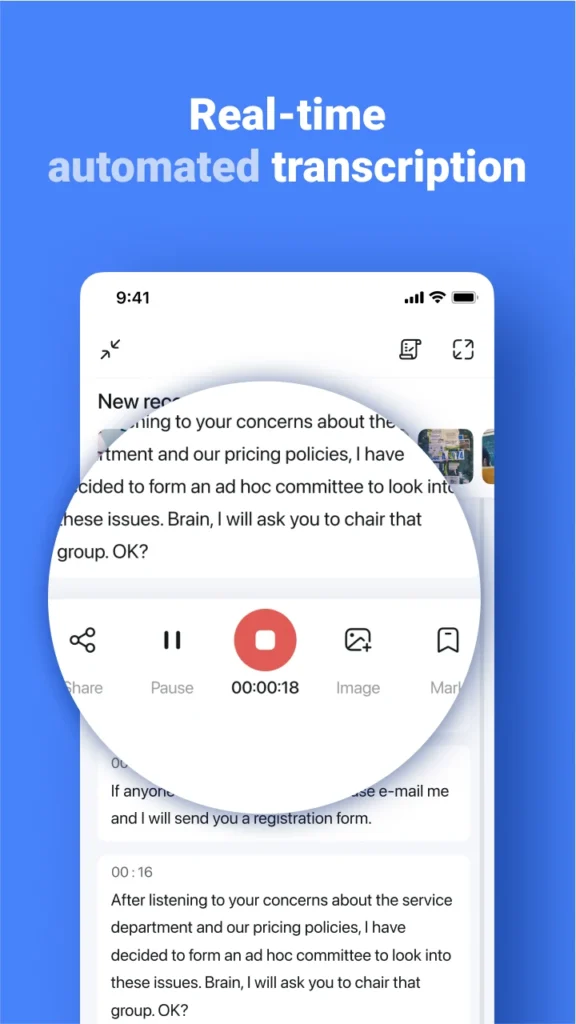
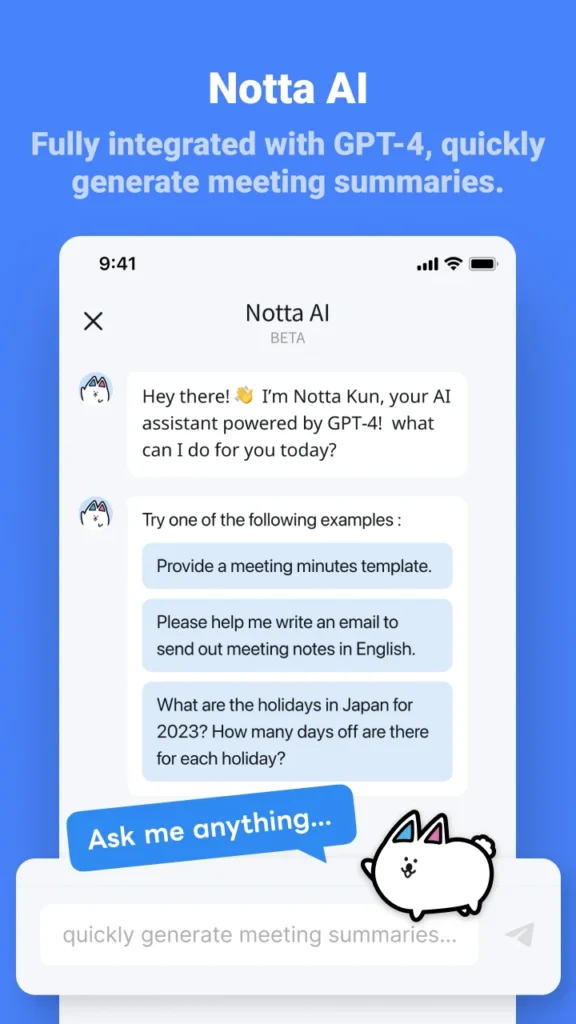

Key Highlights:
- Real-time and file-based audio transcription
- Editing and keyword-based audio navigation
- Multi-language transcription and translation
- Export options in multiple text formats
- Device synchronization via cloud
Who it’s best for:
- Individuals transcribing meetings, interviews, or lectures
- Users working in multiple languages or requiring translation
- Professionals organizing spoken content into text archives
- People using mobile, tablet, and desktop platforms for notes
Contact Information
- Website: www.notta.ai
- App Store: apps.apple.com/us/app/notta-transcribe-ai-notetaker
- Google Play: play.google.com/store/apps/details
- YouTube: www.youtube.com/@Notta-Official
- Facebook: www.facebook.com/notta.en
- Twitter: twitter.com/NottaOfficial
- LinkedIn: www.linkedin.com/company/notta-official

9. Buffer
Buffer is a social media scheduling app developed by Buffer, Inc. that allows users to plan and manage posts across multiple platforms. The app supports Instagram, Facebook, TikTok, LinkedIn, Pinterest, YouTube, and others, and provides a calendar view for organizing content. Users can create, store, and schedule posts in advance, with options for visualizing timelines and setting times for future publication.
The app includes tools for organizing content ideas, tagging posts by campaign or theme, and reviewing analytics from past activity. It offers integrations for browser-based content saving and allows users to monitor post performance using a built-in dashboard. Buffer also supports scheduling different content types, such as Reels, Stories, and Shorts.
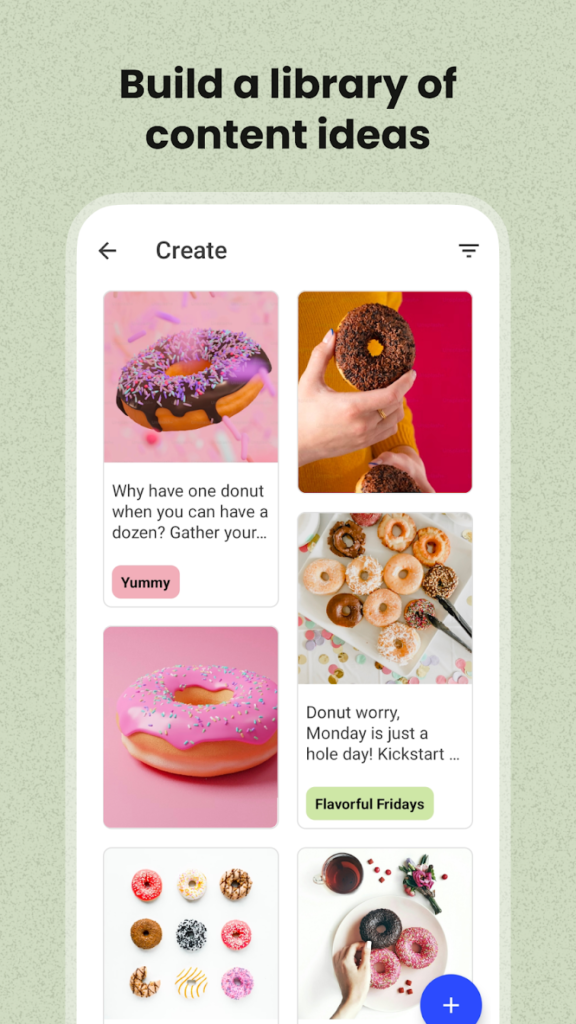
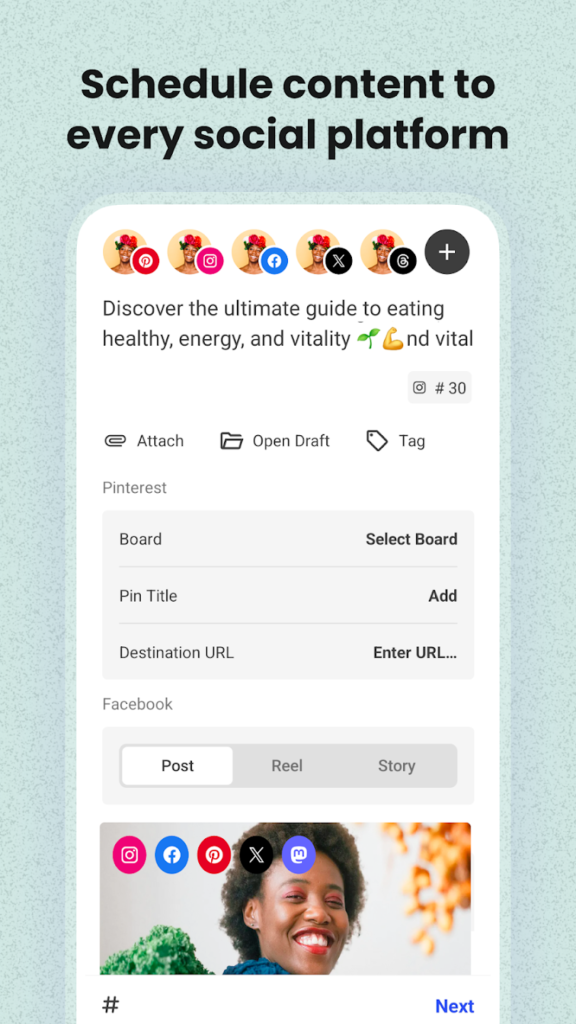
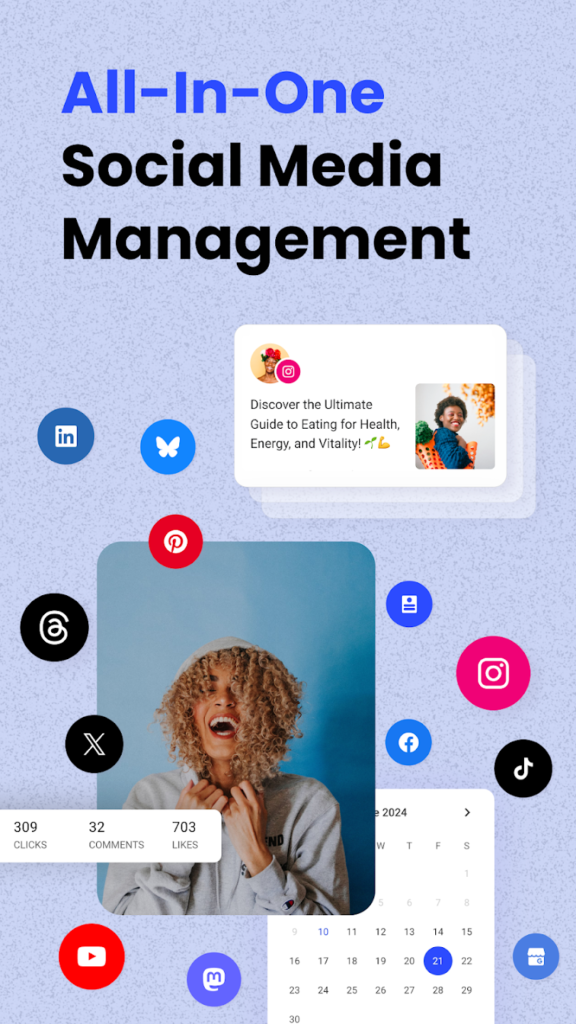
Key Highlights:
- Multi-platform content scheduling in one interface
- Tagging and organizing content ideas
- Calendar view for weekly or monthly planning
- Post analytics and performance tracking
- Browser extension support for content management
Who it’s best for:
- Individuals coordinating posts across different social media platforms
- Users managing a mix of video, story, and image content
- People looking to centralize their content scheduling
- Those maintaining a consistent social media timeline
Contact Information
- Website: buffer.com
- App Store: apps.apple.com/us/app/buffer-plan-schedule-posts
- Google Play: play.google.com/store/apps/details
- LinkedIn: buffer.com/linkedin
- Pinterest: buffer.com/pinterest
- Tik-Tok: buffer.com/tiktok
- YouTube: buffer.com/youtube
- Facebook: buffer.com/facebook
- Twitter: buffer.com/x
- Instagram: buffer.com/instagram
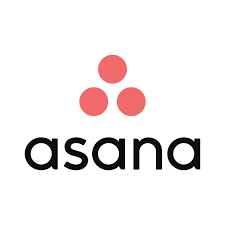
10. Asana
Asana is a task and project management app developed by Asana, Inc. It supports the creation of shared workspaces where users can organize projects, assign tasks, and track deadlines. Tasks can be viewed using different layouts, including lists, calendar view, and kanban-style boards. The app is available on both mobile and web platforms.
Users can manage individual and collaborative work, comment on tasks, and attach files. The app includes tools for customizing task fields, reviewing workload overviews, and monitoring long-term project timelines. It also provides notifications and summaries related to updates within team projects. Asana supports integration with a variety of third-party tools.
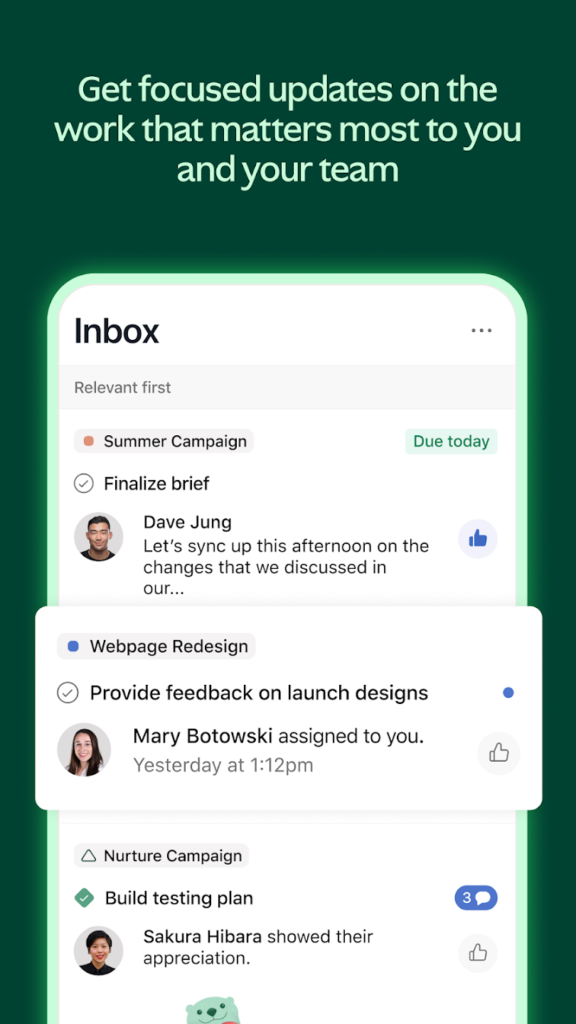


Key Highlights:
- Multi-view project layouts (list, board, calendar)
- Task assignments and due date tracking
- Commenting, file attachments, and updates
- Available on iOS, Android, and web
- Integration with third-party apps
Who it’s best for:
- Teams working on structured project timelines
- Individuals managing both personal and team tasks
- Users who prefer visual organization tools
- People using multiple platforms for task coordination
Contact Information:
- App store: apps.apple.com/us/app/asana-where-work-connects
- Google Play: play.google.com/store/apps/details
- Website: asana.com
- Facebook: www.facebook.com/asana
- Twitter: x.com/intent/follow
- Instagram: www.instagram.com/asana
- LinkedIn: www.linkedin.com/company/asana
- YouTube: www.youtube.com/channel/UC2
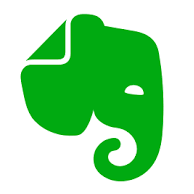
11. Evernote
Evernote is a note-taking and task management app developed by Evernote Corporation. It allows users to create notebooks, organize information, and sync data across multiple devices. Content types supported in the app include text notes, scanned documents, web clippings, audio, PDFs, and images. Users can group content by themes or projects using tags and folders.
The app includes tools for setting reminders, linking with external calendars, and managing to-do lists. Notes can be accessed offline and edited on both desktop and mobile platforms. Evernote offers optional upgrades that include features like expanded storage, offline access, and advanced task functions.
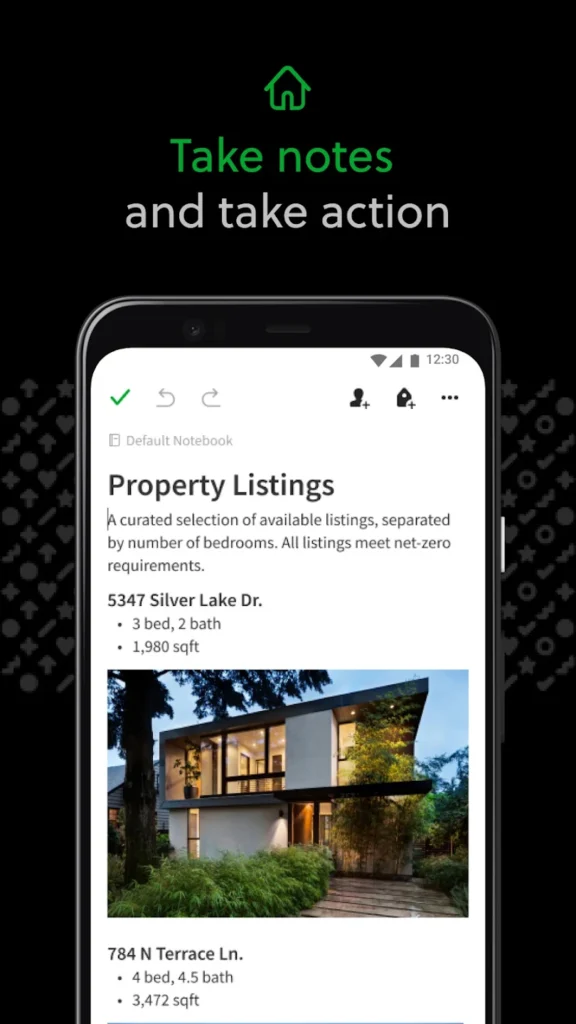
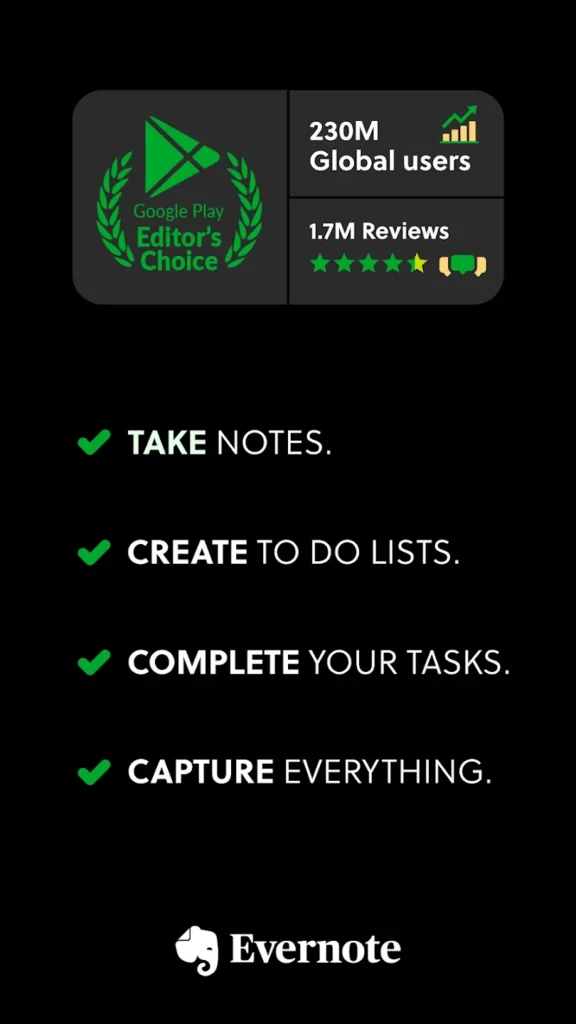

Key Highlights:
- Cross-platform note and document sync
- Supports multiple content types including scanned items and audio
- Google Calendar integration
- Tagging, notebooks, and search functionality
- Subscription options for additional storage and tools
Who it’s best for:
- People organizing large collections of notes or documents
- Users who scan physical items into digital format
- Individuals linking notes with calendars or task lists
- Those working across desktop and mobile platforms
Contact Information:
- App store: apps.apple.com/us/app/evernote-notes-organizer
- Google Play: play.google.com/store/apps
- Website: evernote.com
- Facebook: www.facebook.com/evernote
- Twitter: twitter.com/evernote
- Instagram: www.instagram.com/evernote
- YouTube: www.youtube.com/channel/UCr_
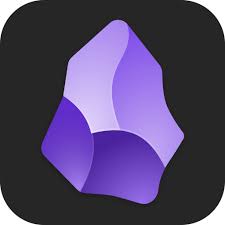
12. Obsidian
Obsidian is a Markdown-based note-taking app developed by the Obsidian team. It operates on a system of plain text files stored locally on the user’s device or cloud drive, allowing flexible access and control over content. Users can create, organize, and link notes using internal connections, with options to customize layout and interface themes.
The app supports features such as graph view, custom toolbars, quick actions, and plugin integration. It includes options for community-developed extensions and visual enhancements. Obsidian is available on both desktop and mobile platforms and can be used offline. Synchronization between devices is optional and available through paid services.

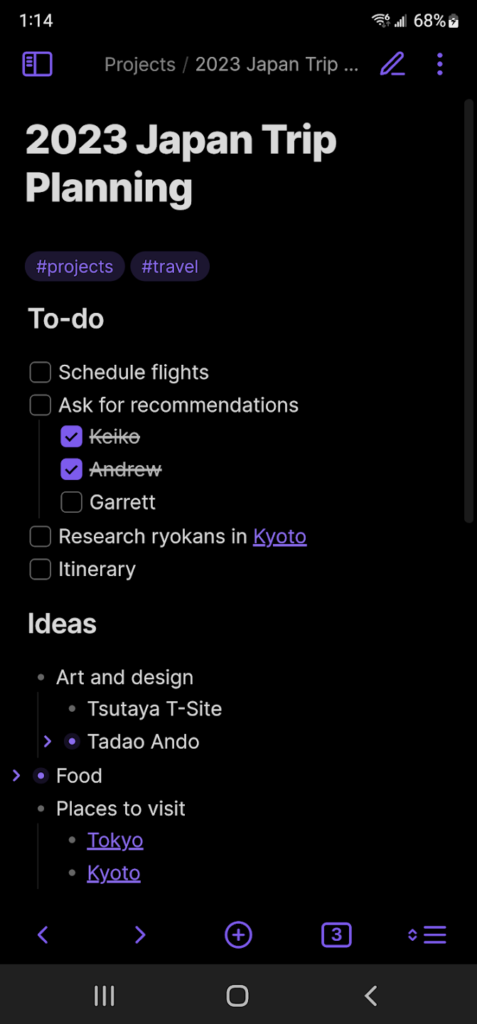
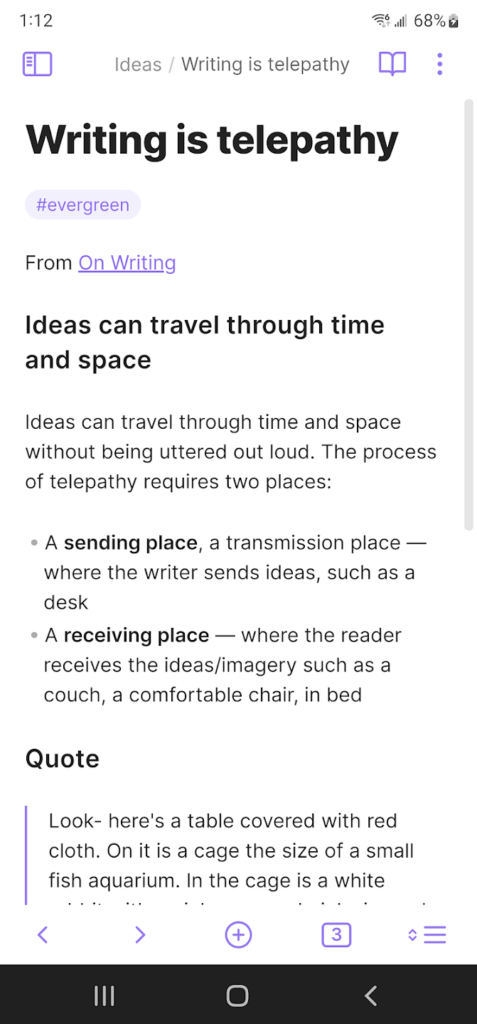
Key Highlights:
- Graph visualization of note connections
- Plugin and theme customization
- Mobile and desktop support
- Optional sync and cloud storage
Who it’s best for:
- Users working with interconnected note structures
- Individuals preferring local file control
- Those looking to customize their writing environment
- Users familiar with Markdown-based workflows
Contact Information:
- App Store: apps.apple.com/us/app/obsidian-connected-notes
- Google Play: https://play.google.com/store/apps/details?id=md.obsidian&hl=en
- Website: obsidian.md
- Twitter: x.com/obsdmd
- YouTube: www.youtube.com/@obsdmd
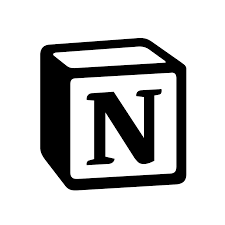
13. Notion
Notion is a productivity app developed by Notion Labs, Inc. It allows users to work with notes, documents, task boards, and calendars within one interface. The app uses a modular system where pages are built with blocks, which can include text, checklists, databases, embedded content, and more. Content is stored in customizable workspaces, which can be organized privately or shared with collaborators.
The app is available across mobile, desktop, and web platforms and includes syncing features across devices. It also provides optional integration with external tools such as Slack, Figma, and GitHub. Notion supports templates, search filters, and AI-assisted writing or data generation. Some features require a subscription, including certain AI tools and team-level collaboration.
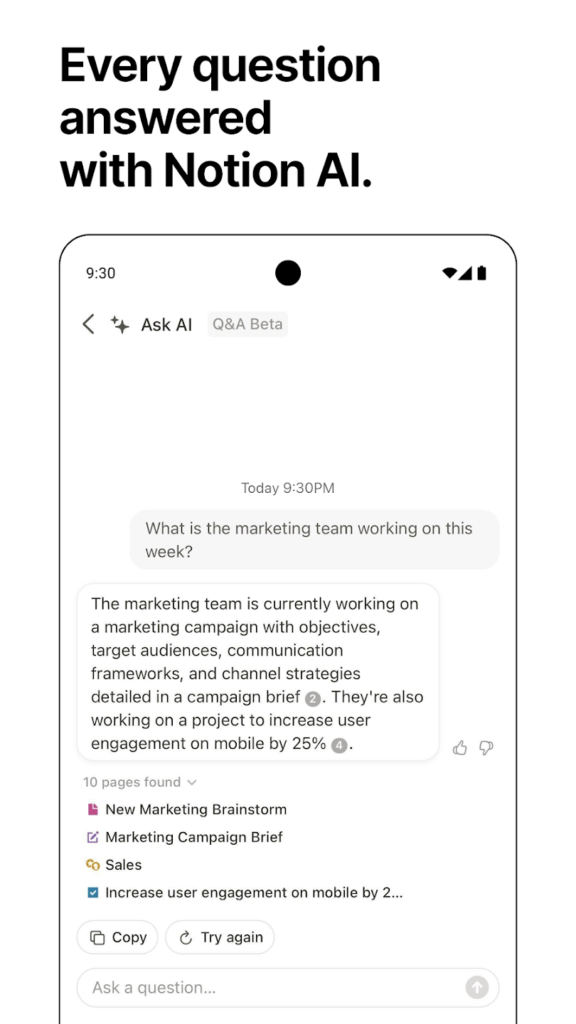
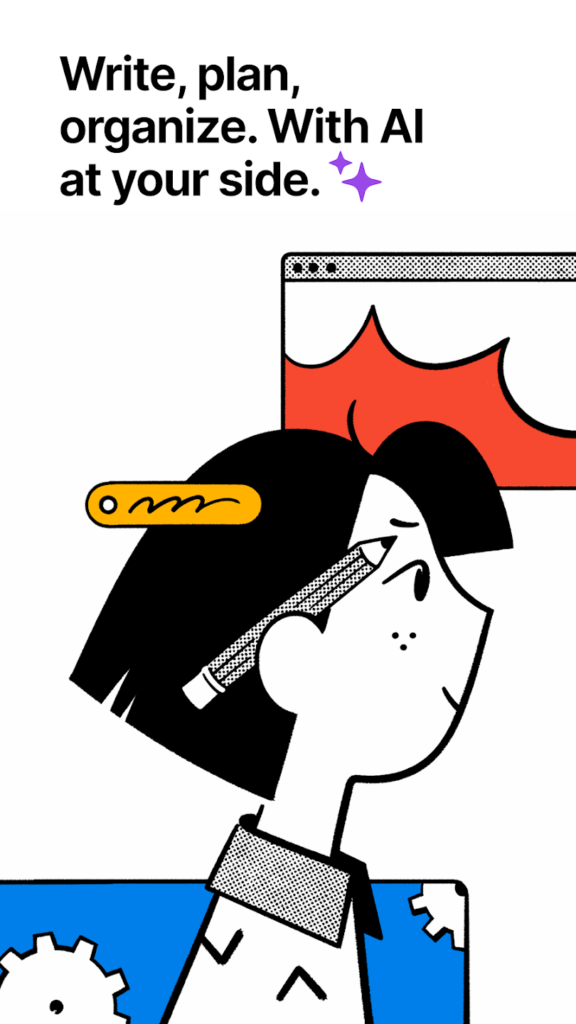
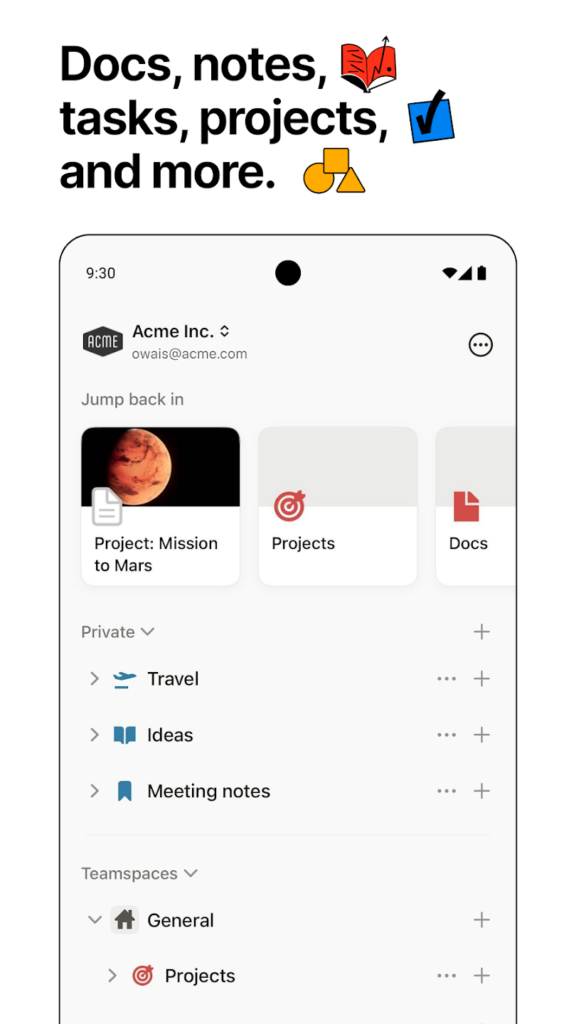
Key Highlights:
- Block-based content editor for notes, tasks, and tables
- Cross-device syncing for browser, desktop, and mobile
- Support for customizable templates and workspace sharing
- AI tools for writing, summarizing, and autofilling tables
- Integration with selected external platforms
Who it’s best for:
- Users combining note-taking with task and document management
- Teams organizing multi-format content in shared workspaces
- Individuals managing personal or academic workflows
- People seeking to structure data using flexible page formats
Contact Information:
- App store: apps.apple.com/us/app/notion-notes-tasks-ai
- Google Play: play.google.com/store/apps/details
- Website: www.notion.com
- Facebook: www.facebook.com/NotionHQ
- Twitter: twitter.com/NotionHQ
- Instagram: www.instagram.com/notionhq
- LinkedIn: www.linkedin.com/company/notionhq
- YouTube: www.youtube.com/channel/UCo
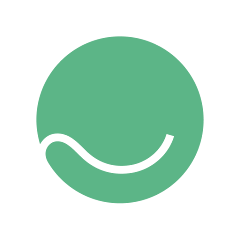
14. Tiimo
Tiimo is a scheduling app developed by Tiimo ApS and is available on both Android and iOS. It offers a visual interface for organizing daily routines and managing time through a timeline view. Users can create tasks, checklists, and routines, and set notifications to track their progress throughout the day. The platform includes basic features under a free plan, with additional functions unlocked through paid subscriptions.
The app provides customization options such as colors, icons, and widgets, along with support for calendar import. It includes tools to group or prioritize tasks and allows for shared access across multiple profiles. Tiimo has been developed with consideration for neurodivergent users, but its core layout and functions are accessible to a wide range of users with different planning needs.
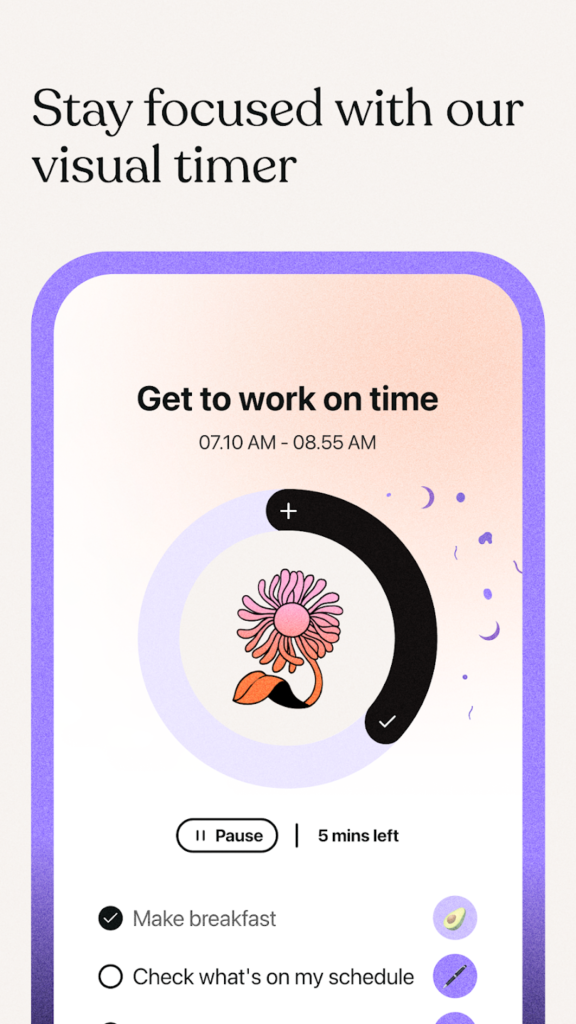
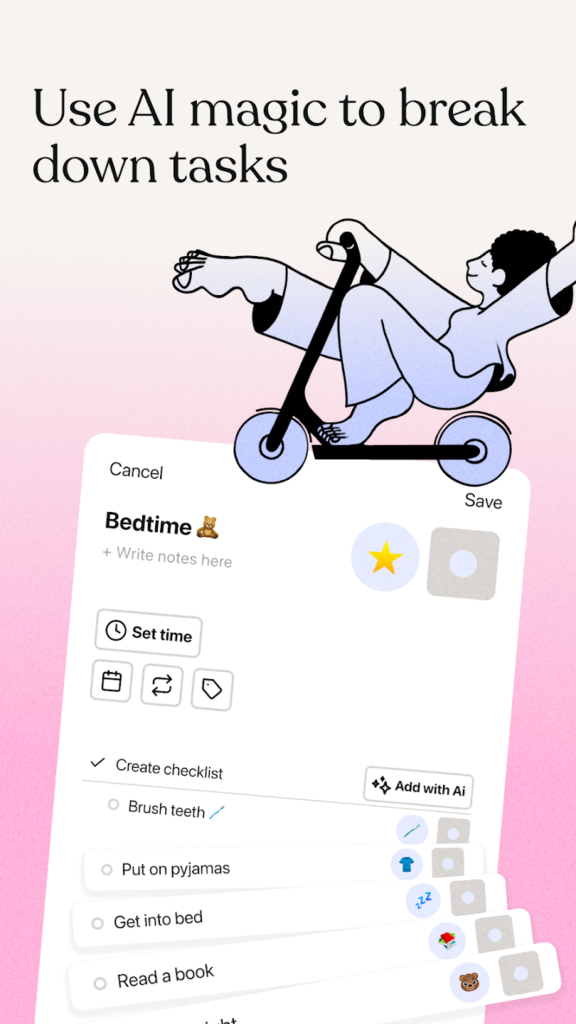
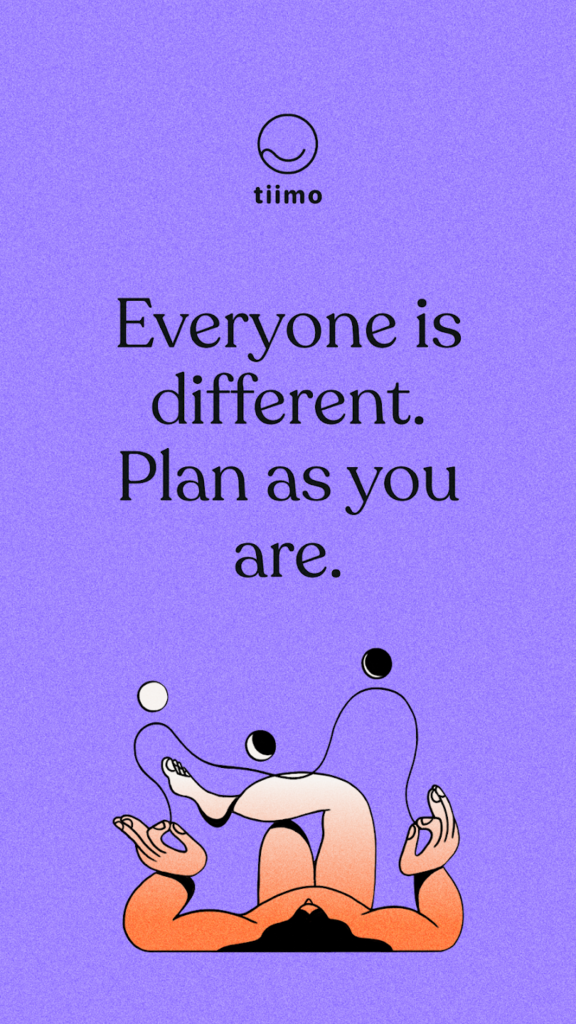
Key Highlights:
- Timeline-based visual planner with notifications and checklists
- Includes prebuilt routine templates and task grouping features
- Customizable with color themes, icons, and widgets
- Cross-platform access with mobile apps and a web planner (in development)
- Offers both individual and shared profile usage
Who it’s best for:
- Individuals using visual timelines for daily planning
- Users interested in customizing the look and structure of their planner
- Those who want to organize routines and recurring schedules
- People looking for cross-device task tracking and time management tools
Contact Information:
- App store: apps.apple.com/us/app/tiimo-ai-plan-focus-to-do
- Google Play: play.google.com/store/apps
- Tik-Tok: www.tiktok.com/@tiimoapp
- Website: www.tiimoapp.com
- Facebook: www.facebook.com/tiimoapp
- LinkedIn: linkedin.com/company/tiimo
- Instagram: www.instagram.com/tiimoapp
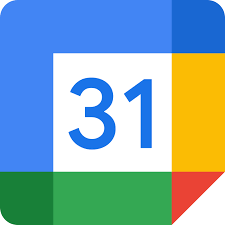
15. Google Calendar
Google Calendar is a time management app developed by Google LLC. It allows users to organize their schedules using daily, weekly, and monthly views, with options to set reminders, create events, and track tasks. Calendar entries can be created manually or pulled from other Google services such as Gmail. The app is available across Android, iOS, and web platforms, syncing automatically across signed-in devices.
It supports integration with other calendar services like iCloud and Exchange and includes features for shared calendars, layered views, and event attachments. Users can choose to work within personal or shared schedules, access agenda information offline, and adjust their settings for appearance and notifications. Google Calendar is part of the broader Google Workspace suite.
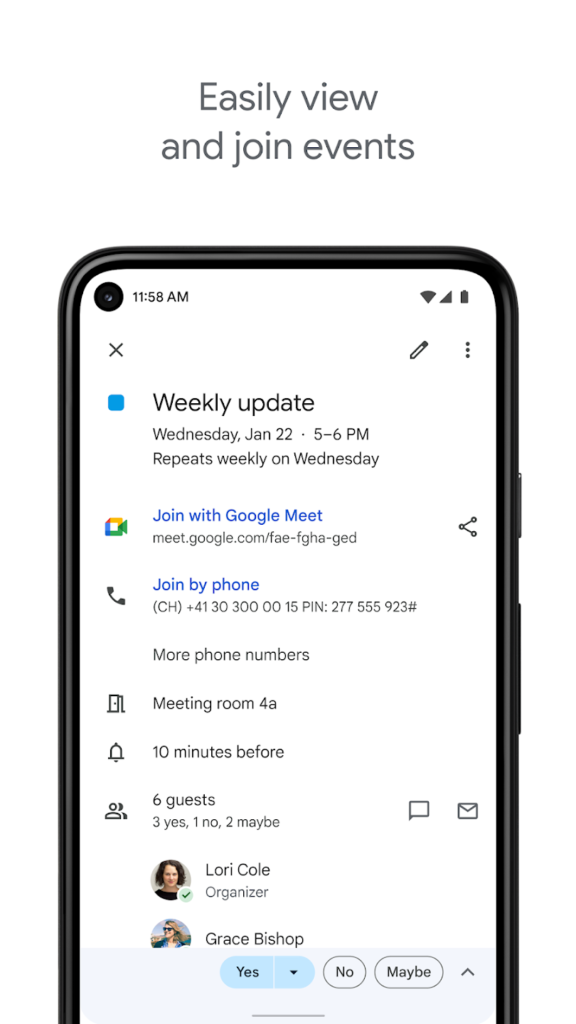
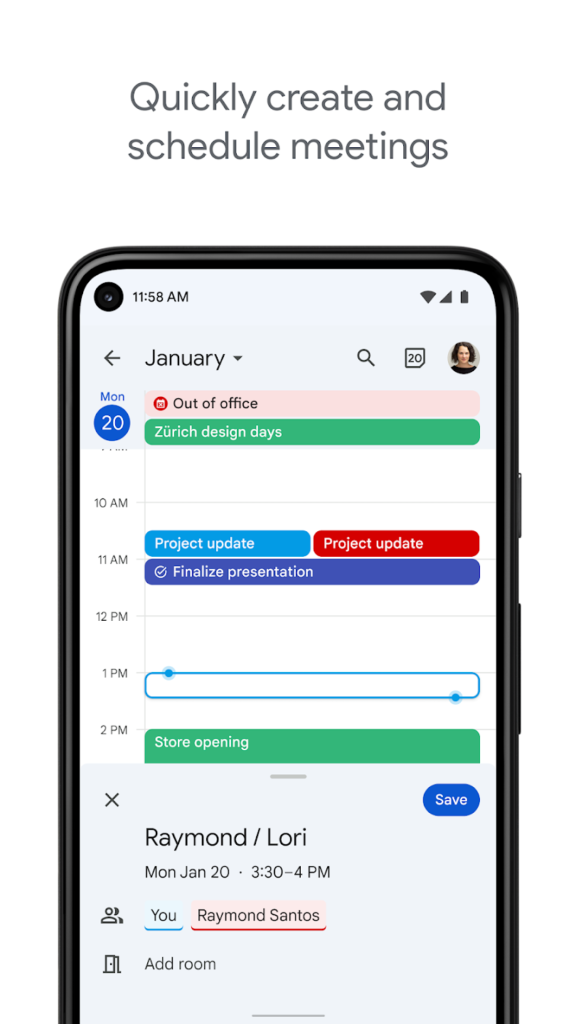
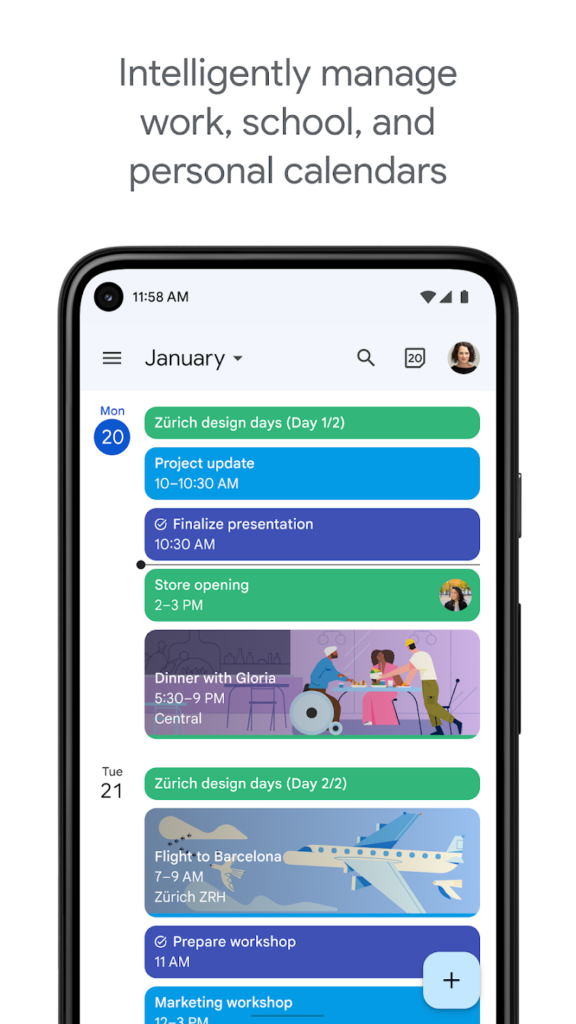
Key Highlights:
- Available on mobile and desktop with automatic sync
- Multiple calendar views and event creation options
- Integration with Gmail, Meet, and third-party calendars
- Task tracking included alongside events
- Shared calendar and layered calendar functions
Who it’s best for:
- Individuals managing personal and professional schedules
- Users needing synced calendars across multiple devices
- Teams working within Google Workspace environments
- People looking for task and event visibility in one interface
Contact Information:
- App store: apps.apple.com/us/app/google-calendar-get-organized
- Google Play: play.google.com/store/apps
- Website: workspace.google.com
- Facebook: www.facebook.com/googleworkspace
- Instagram: www.instagram.com/googleworkspace
- YouTube: www.youtube.com/channel/UCBm
- LinkedIn: www.linkedin.com/showcase/googleworkspace
- Twitter: x.com/googleworkspace
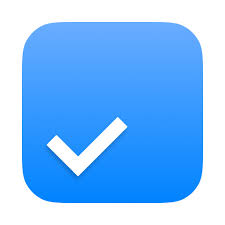
16. Any.do
Any.do is a productivity app that combines task management, calendar scheduling, reminders, and note-taking in one interface. It allows users to create and organize to-do lists, assign tasks, and add recurring or location-based reminders. The app supports synchronization across devices and offers both mobile and desktop access.
Users can work individually or collaboratively using shared lists and assigned tasks. The app also supports attachments, subtasks, and voice input for adding entries. Calendar views are available in multiple formats, and the interface includes options for daily planning. It is offered as a free download with in-app subscription options.
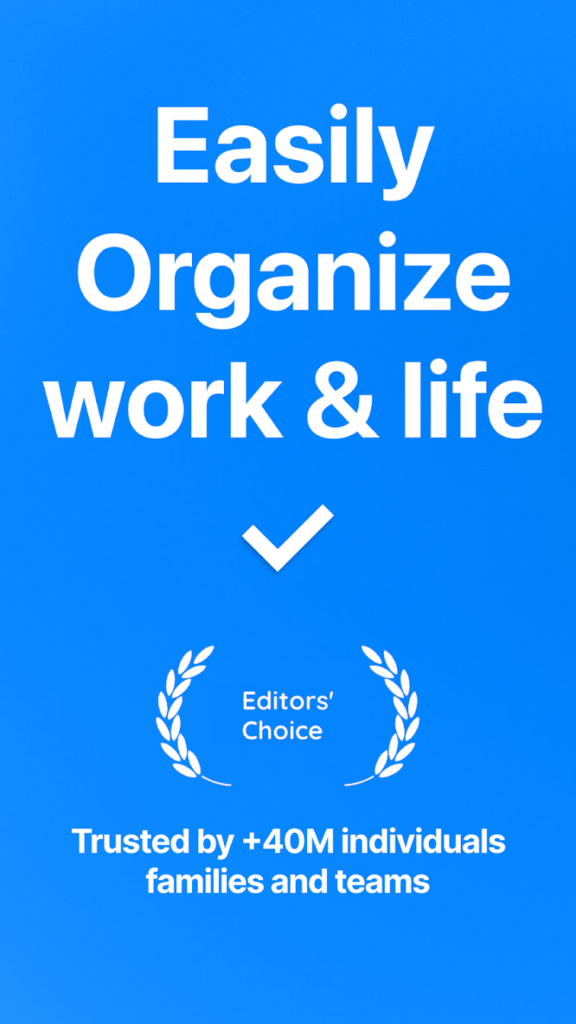
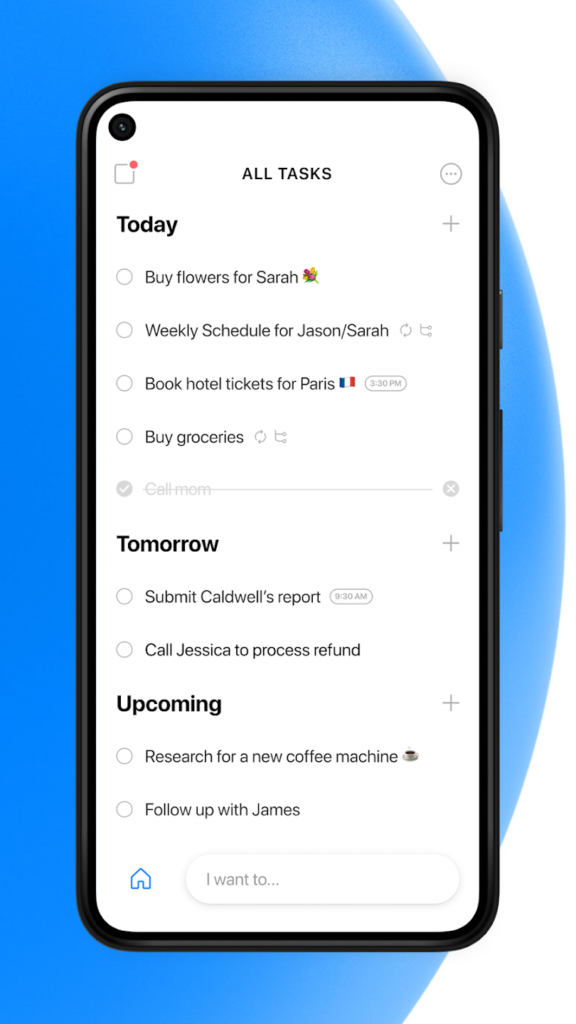

Key Highlights:
- Cross-device sync of tasks, reminders, and events
- Calendar views with agenda and scheduling options
- Task collaboration through shared lists
- Voice input, subtasks, and file attachments supported
- Integrates with multiple productivity platforms
Who it’s best for:
- Individuals who combine task tracking with calendar use
- Teams that assign and monitor shared tasks
- Users seeking a structured layout for personal planning
Contact Information
- Website: any.do
- App Store: apps.apple.com/us/app/any-do-to-do-list-planner
- Google Play: play.google.com/store/apps/details
- E-mail: customers@any.do
- Facebook: www.facebook.com/Any.do
- Twitter: x.com/anydo
- LinkedIn: www.linkedin.com/company/any.do
- Instagram: www.instagram.com/anydo
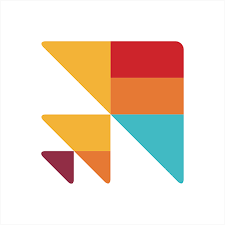
17. Cloze
Cloze is an app designed to centralize contact management, email, and communication tracking across different channels. It gathers data from users’ apps to display a consolidated profile for each person or company, including emails, messages, meetings, notes, and social media activity. The app is available on Android, iOS, and desktop, and offers both individual and collaborative features.
Cloze includes tools for organizing tasks, monitoring communication, and scheduling email. It also allows users to manage deals, contacts, and projects through a unified interface. The app uses AI to identify follow-ups and link communication with relevant people or projects. Subscription plans unlock expanded functions, and a basic version is available at no cost.
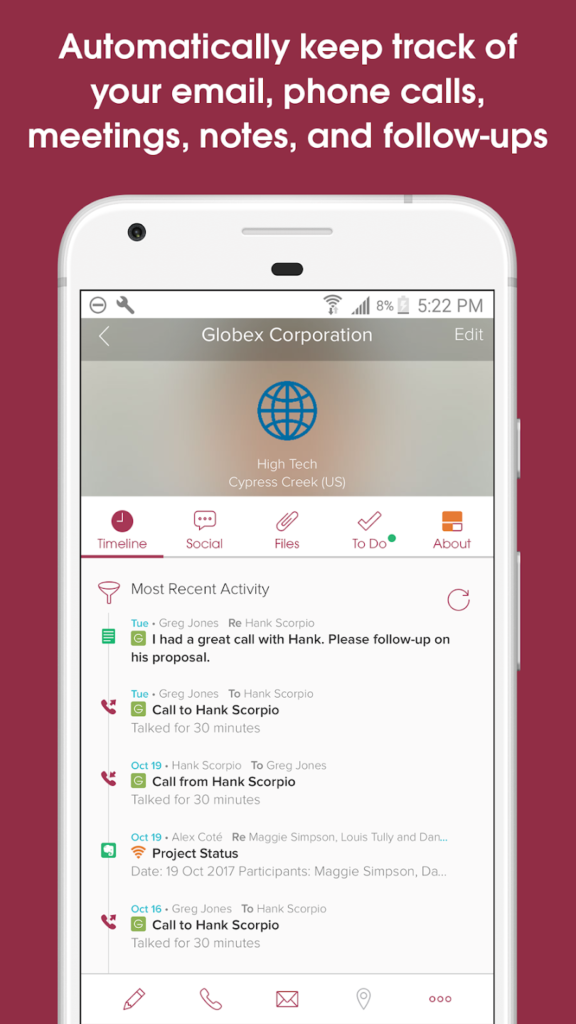

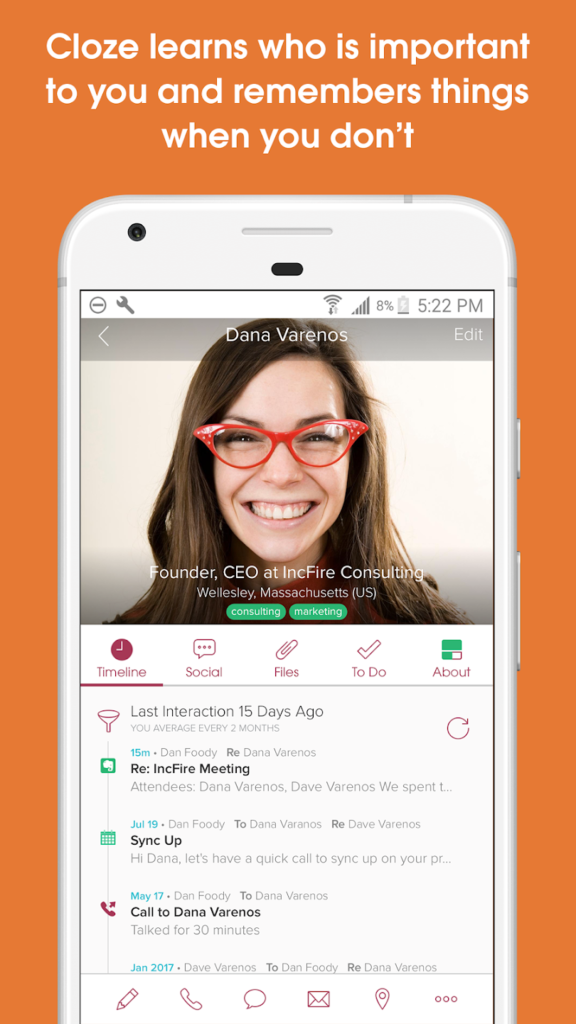
Key Highlights:
- Aggregates communication data from emails, calls, messages, and meetings
- Displays unified contact views with history and files
- Tracks project and deal activity in one timeline
- Offers email tools like templates, tracking, and scheduled send
- AI identifies action items and suggests follow-ups
Who it’s best for:
- Professionals managing ongoing relationships and communication history
- Users looking to link contact details with email, calendar, and files
- Individuals coordinating client or deal-related follow-up
- Teams tracking shared progress on tasks or projects
Contact Information:
- App store: apps.apple.com/us/app/cloze-relationship-management
- Google Play: play.google.com/store/apps
- Website: ai.cloze.com
- Instagram: www.instagram.com/cloze
- Twitter: x.com/cloze
- LinkedIn: www.linkedin.com/company/cloze
- Facebook: www.facebook.com/clozebiz
- YouTube: www.youtube.com/c/cloze
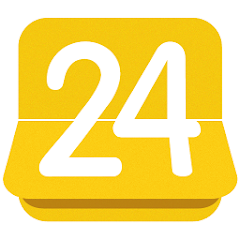
18. 24me
24me is a multi-purpose scheduling and productivity app available on both Android and iOS. It combines calendars, task lists, notes, and account reminders in a single interface. The app supports integrations with major calendar providers, including Google Calendar, Outlook, Exchange, and Apple iCal.
Users can create and sync tasks, set reminders, view weather or location-based alerts, and share items with others. 24me also includes features for voice input, watch support, and optional visual customization. It operates on a freemium model, with in-app purchases providing access to additional customization and scheduling tools.
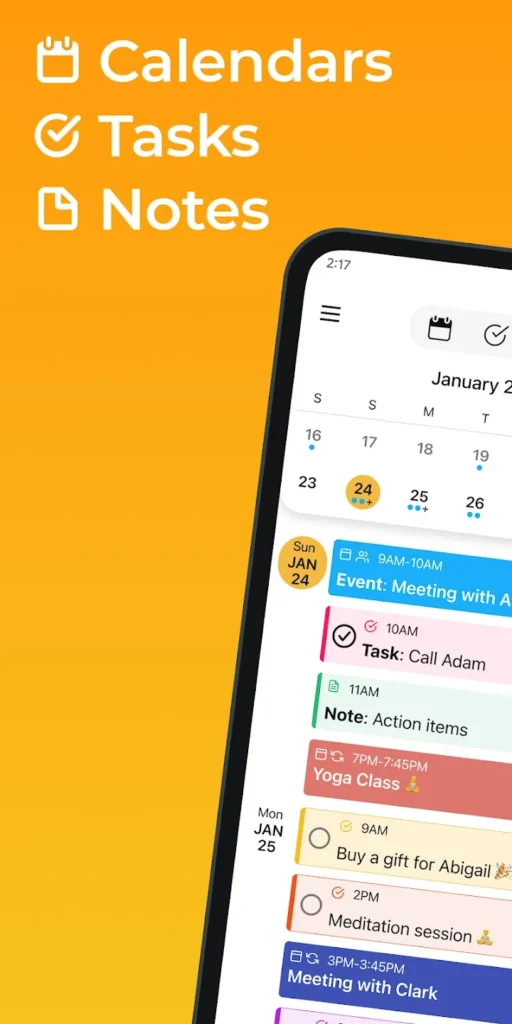
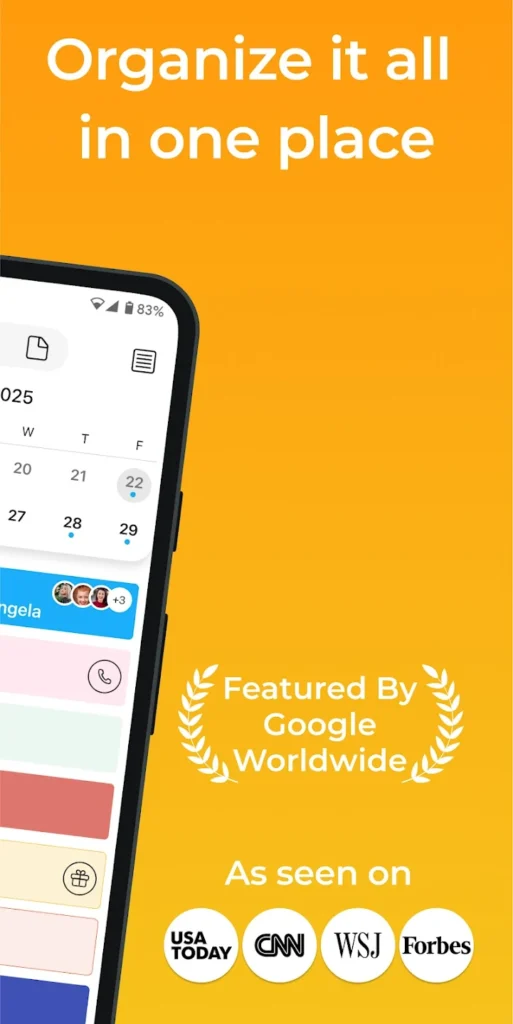
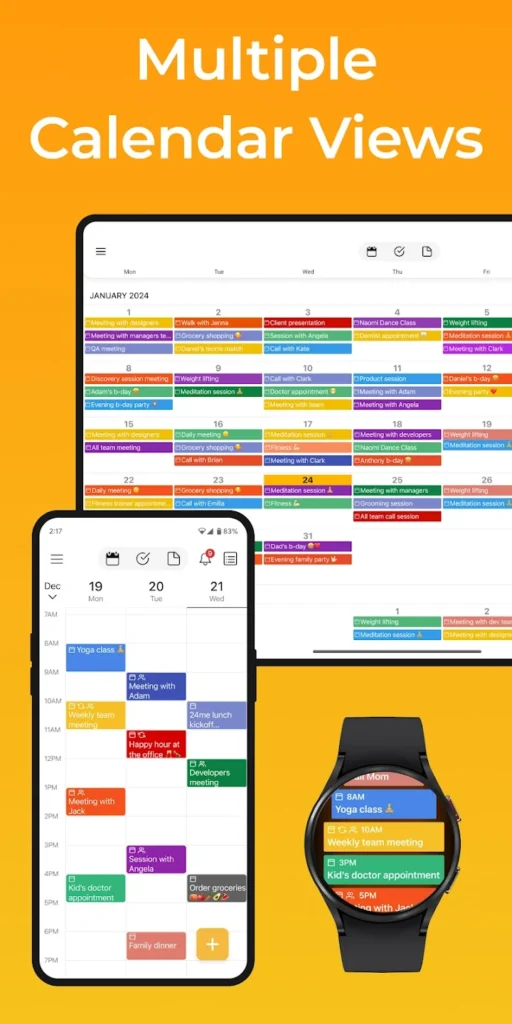
Key Highlights:
- Combines calendar, tasks, notes, and accounts in one place
- Integrates with external calendars like Google, Microsoft, and Apple
- Offers voice input, location-based notifications, and weather alerts
- Compatible with Wear OS and Apple Watch
- Customization options and add-ons available via subscription
Who it’s best for:
- Users looking for an app that combines several planning tools
- People managing schedules across multiple calendars
- Individuals sharing task lists or reminders with family or teams
- Anyone who wants an interface that works across mobile and smartwatch devices
Contact Information:
- App store: apps.apple.com/us/app/24me-calendar-planner-to-do
- Google Play: play.google.com/store/apps
- Website: www.twentyfour.me
- Twitter: twitter.com/my24me
- Facebook: www.facebook.com/my24me
- Email: info@twentyfour.me
- YouTube: www.youtube.com/user/24mevideos
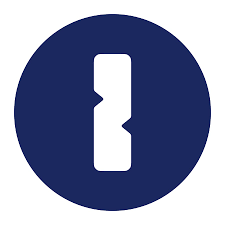
19. 1Password
1Password is a cross-platform password manager developed by AgileBits Inc., available on Android, iOS, macOS, Windows, and as a browser extension. It is designed to store and autofill passwords, generate secure credentials, and manage sensitive data such as credit card details, secure notes, and passkeys.
The app supports biometric authentication, built-in two-factor code generation, and industry-standard passkey storage. Users can share passwords securely, receive security alerts via Watchtower, and enable Travel Mode to hide vaults during transit. 1Password offers individual and family plans, with a 14-day free trial.
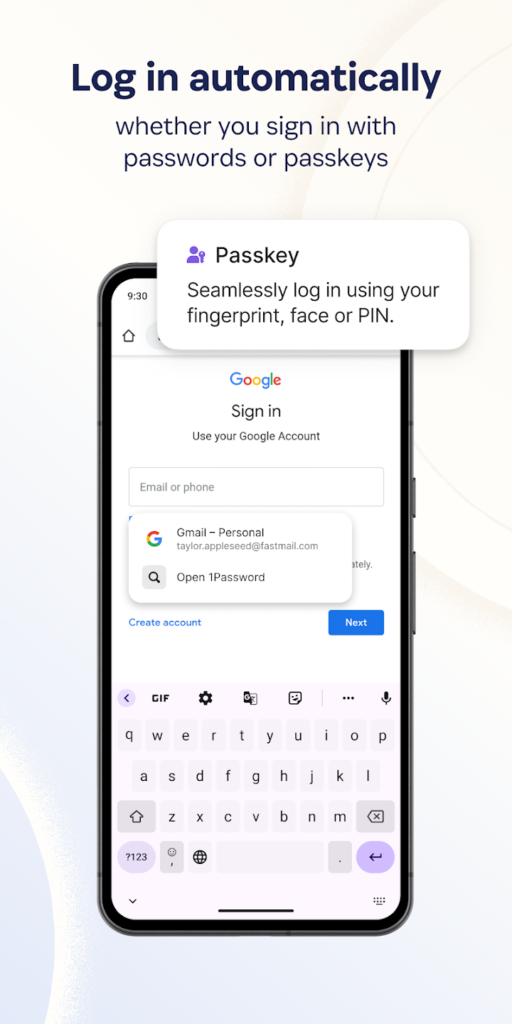
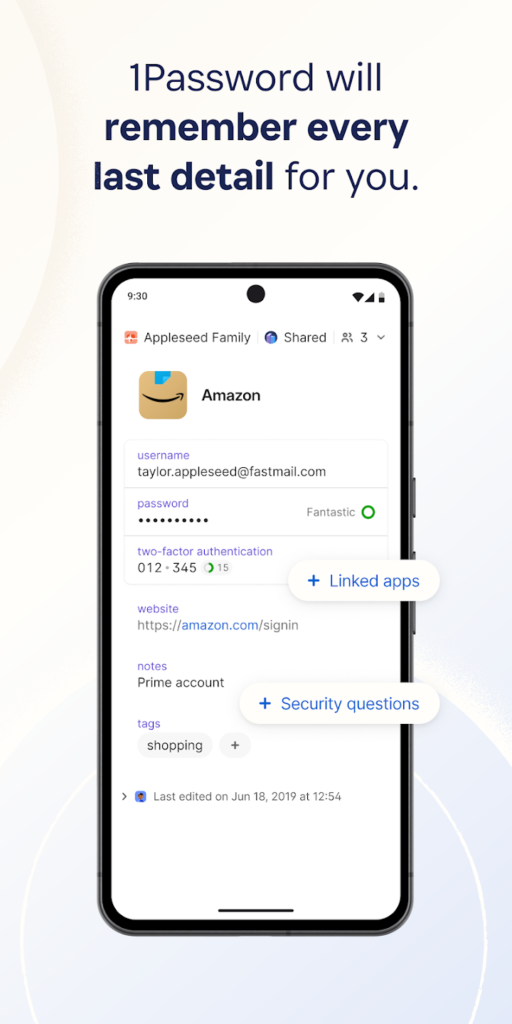
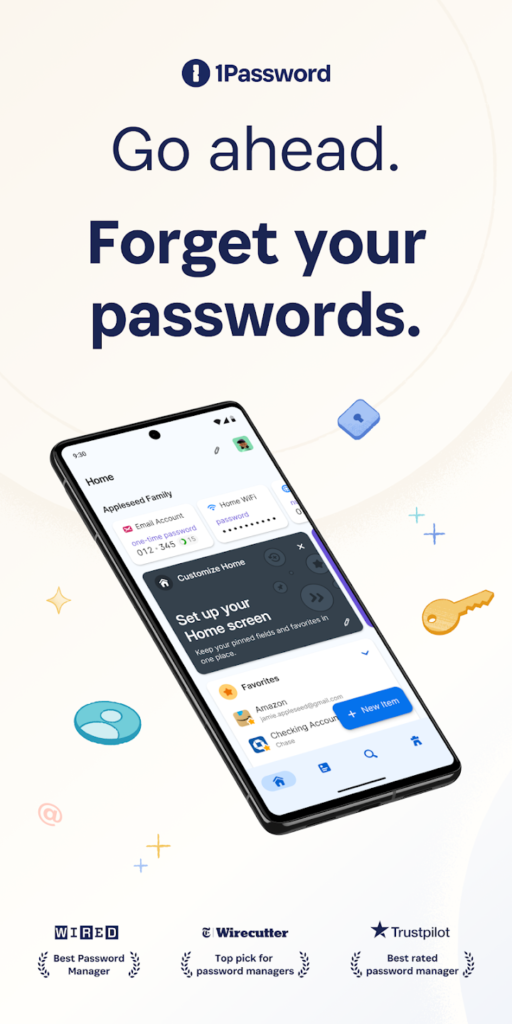
Key Highlights:
- Autofill for usernames, passwords, and 2FA codes
- Works across devices and browsers including Safari, Chrome, and Firefox
- Supports passkeys and biometric logins
- Secure item sharing, including with non-users
- Travel Mode to hide sensitive data when needed
- Watchtower alerts for compromised credentials
Who it’s best for:
- Individuals and families managing multiple passwords securely
- Users who need cross-device and cross-browser support
- People looking to consolidate login, payment, and sensitive info storage
- Those interested in switching to passkeys or using advanced security tools
Contact Information:

20. Dropbox
Dropbox is a cloud storage application developed by Dropbox, Inc., available on iOS, Android, and desktop platforms. It allows users to store, access, and organize files in a centralized digital environment. Files can be viewed offline and shared through generated links without requiring recipients to have a Dropbox account.
The app supports features like folder syncing between devices, scanning physical documents into PDF format, and access to version history for certain file types. Dropbox integrates with various operating systems and browsers and provides both free and paid plans, including options for expanded storage and account recovery tools.
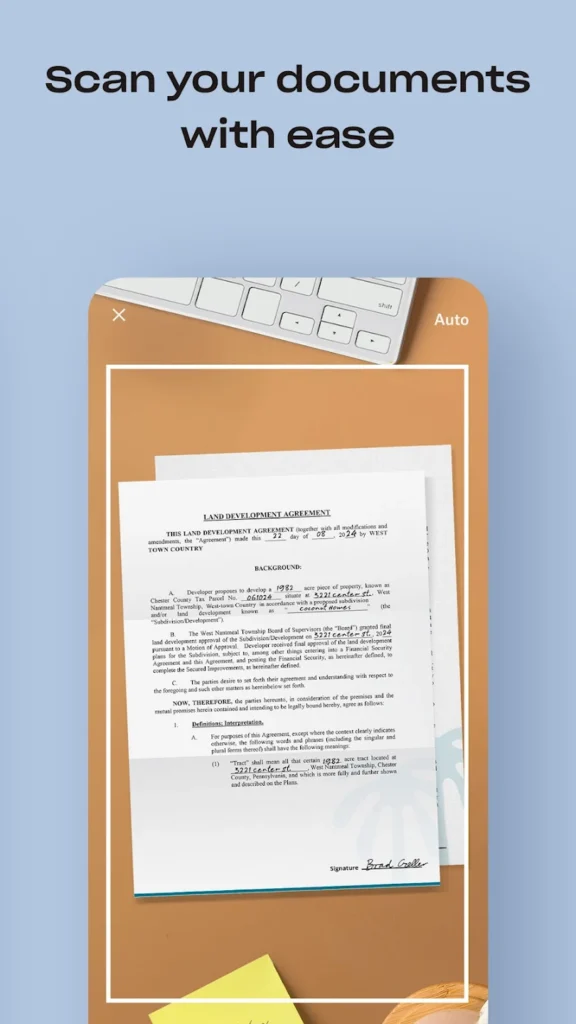
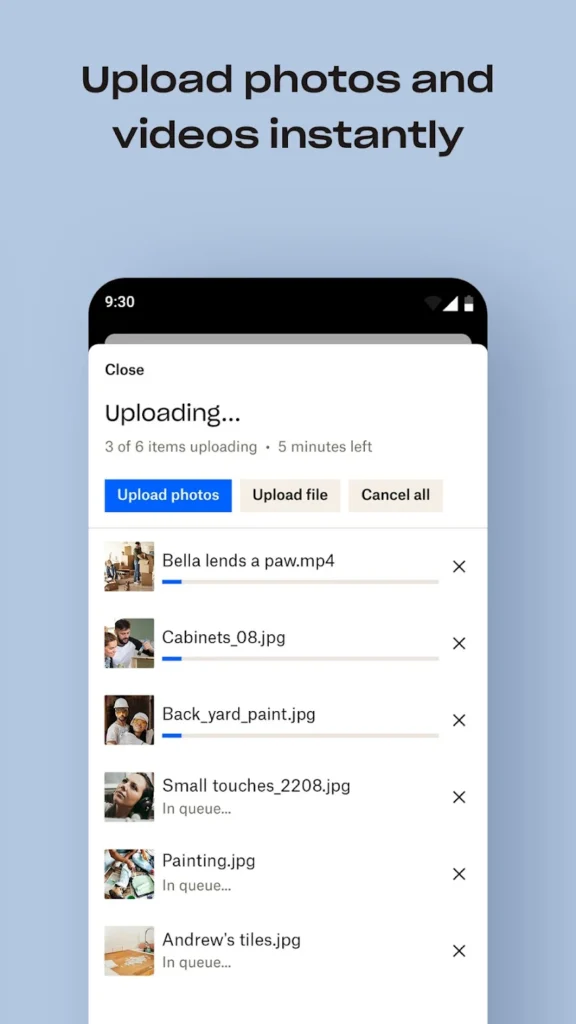

Key Highlights:
- Offline availability for stored items
- Document scanning via mobile device
- Cross-platform synchronization support
- File version history and recovery options
Who it’s best for:
- Users managing files across multiple devices
- Individuals needing offline access to documents
- People who scan or store paper documents digitally
- Those looking to organize personal or work-related content in one space
Contact Information:
- App Store: apps.apple.com/us/app/dropbox-cloud-storage-backup
- Google Play: play.google.com/store/apps/details
- Website: www.dropbox.com
- Twitter: twitter.com/Dropbox
- Facebook: www.facebook.com/Dropbox
- YouTube: www.youtube.com/user/dropbox
Conclusion
Being organized looks different for everyone, but the right tools can make it easier to stay on top of things. From managing schedules and tasks to storing files and taking notes, apps now offer a variety of ways to keep daily life more structured and less chaotic.
Whether you prefer a simple checklist or a full digital system, the options covered here reflect different needs and styles. Choosing the ones that fit best with how you live and work can help bring more clarity and consistency to your day-to-day routines.
